
- Today's Deals
- Sign Up & Save!

- Top Cruise Destinations
- Alaska Cruises
- Bahamas Cruises
- Bermuda Cruises
- Caribbean Cruises
- Europe Cruises
- Mexico Cruises
- 1.800.764.7419

Never Miss a Cruise Deal
- Thank you for signing up!
- Click here to learn more about our specials.
Have Fun. Be Safe
- Health Protocols and Requirements for Sailing
Travel Documentation and Online Check-in
- Travel Documents
- Online Check-In
Getting There
- Cruise Terminal Information and Parking
- Airport and Pier Transportation
- Air Information
Before You Board
- Embarkation Day Check-In
Youth and Family
- Youth Programs (Under 2 and 2-11 years old)
- Teen Programs (12-17 years old)
- Carnival's Seuss at Sea
- Age Policies
Things to Know
Onboard experiences.
- Shore - Excursions
- Spa and Fitness
- Outdoor Fun
- Entertainment and Activities
- For Your Convenience
- Onboard Guidelines and Policies
- Past Guest Recognition Programs
Onboard Celebrations
- The Fun Shops
- Special Occasions
- Wedding Cruises and Vow Renewals
Dining and Beverages
- Dining and Snacking Options
- Dining Rooms
- CHEERS! Beverage Program
- Liquor and Beverage Policy
Onboard Communication
- WI FI Service and Carnivals HUB App
- Staying Connected
Money and Gratuities
- Gratuities (Tips)
- Sail & Sign Onboard Account
- Forms of Payment
- Cruise Cash/Bar/Photo
- Financial Access
Shipboard Health and Safety
- Passenger Bill of Rights
- Guest Screening Policy
- Safety and Security
- Safety Briefing - Muster Station Drill
- General Health Information
- Privacy Notice
- What to Pack
- Cruise Ticket Contract
- Carnival Vacation Protection
- Guests with Disabilities
- Choosing Your Cruise
- Tech Support
- Early Saver Promotion
- Minors / Infants / Pregnancy
- Making changes to your booking
- Carnival EasyPay
- Financing Powered by Uplift
- US Department of State Travel Tips
- And more things to know....
Debarkation - After Your Cruise
- Preparing to Go Home
- Post Cruise Inquiries
U.S. Passport Card
The passport card will facilitate entry and expedite document processing at U.S. land and sea ports-of-entry when arriving from Canada, Mexico, the Caribbean and Bermuda. The card may not be used to travel by air outside the United States . It will otherwise carry the rights and privileges of the U.S. passport book. The Department of State is issuing the passport card in response to the needs of border resident communities for a less expensive and more portable alternative to the traditional passport book. The card has the same validity period as a passport book: 10 years for an adult (age 16 and older); five years for minors (under 16 years of age).
- New passport card cost: $55 (age 16 and older) | $40 (minors under 16 years of age)
- Passport card renewal (by mail) cost: $30
Was this answer helpful?
Answers others found helpful.
- Travel Documentation: U.S. Permanent Residents
- VisaCentral Passport & Visa Service
- Travel Documentation: Non-U.S. Citizens
- Travel Documentation: U.S. Citizens
- Travel Documentation: Canadian Citizens
PLAN A CRUISE
- Search Cruises
- Travel Agent Finder
- Weddings & Occasions
- Carnival Mastercard
- Away We Go Blog
Group Travel
- Group Shore Excursions
Already Booked
- Manage My Cruises
- Shore Excursions
- In-Room Gifts & Shopping
- Spa & Salon Services
- Internet Plans
- Beverage Packages
- Airport Transportation
Customer Service
- Have Fun. Be Safe.
- Early Saver Price Protection Form
- Lowest Price Guarantee Claim Form
- Post-Cruise Inquiries
- Legal Notices for EU & UK Guests
- Diversity, Equity and Inclusion
About Carnival
- Passenger Bill Of Rights
- Legal Notices
- Privacy & Cookies
- Site Map

- © Carnival Corporation. All rights reserved.

- Get a Passport
- Renew a Passport
- Get a Passport Fast
- Courier Services
- Passport Information
Passports for Cruises FAQ
Home » Passports » How to Obtain a U.S. Passport
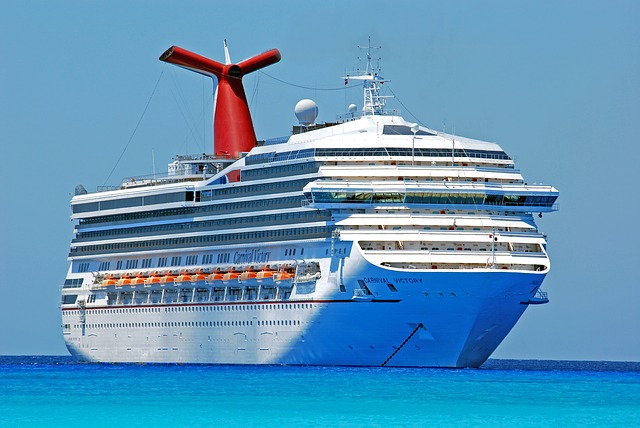
Click for reliable expedited passport courier service .
List of Passports for Cruises FAQ
What is the best way to get a passport for a cruise in 3 weeks? Question: I don't have a passport. I plan on going on my cruise in less than 4 weeks. What is the best way to get my passport in time and how much...
Do I need a passport for a cruise to Mexico? Question: Going on a cruise in two weeks and have never had a passport. I'm aware I can have on expedited using a service but don't want to incur extra .
Top 5 Questions About Expedited Passport Couriers
1. How can you get a passport when you're in a hurry? 2. What exactly does a passport expediter do? 3. Are passport expediting services legitimate? 4. How can I identify a reliable passport expeditor? 5. Is expedited passport service worth it?
You can also visit our library of articles about passport expediting .

Get the Latest Updates
Security Alert May 17, 2024
Worldwide caution, update may 10, 2024, information for u.s. citizens in the middle east.
- Travel Advisories |
- Contact Us |
- MyTravelGov |
Find U.S. Embassies & Consulates
Travel.state.gov, congressional liaison, special issuance agency, u.s. passports, international travel, intercountry adoption, international parental child abduction, records and authentications, popular links, travel advisories, mytravelgov, stay connected, legal resources, legal information, info for u.s. law enforcement, replace or certify documents, before you go.
Learn About Your Destination
While Abroad
Emergencies
Share this page:
Crisis and Disaster Abroad: Be Ready
What the Department of State Can and Can't Do in a Crisis
Information for U.S. Citizens about a U.S. Government-Assisted Evacuation
Traveler's Checklist
Safety and Security Messaging
Best Practices for Traveler Safety
Staying Connected
Smart Traveler Enrollment Program (STEP)
Traveler Information
LGBTQI+ Travelers
Adventure Travel
High-Risk Area Travelers
Travelers with Dual Nationality
Journalist Travelers
Faith-Based Travelers
Pilgrimage Travelers (Hajj and Umrah)
U.S. Students Abroad
Cruise Ship Passengers
Women Travelers
Travelers with Disabilities
Older Travelers
U.S. Volunteers Abroad
Travelers with Pets
Travelers With Firearms
Travel Agents
Travel Safety - Race and Ethnicity
U.S. Travelers in Europe's Schengen Area
Your Health Abroad
Insurance Coverage Overseas
Driving and Road Safety Abroad
Customs and Import Restrictions
Information for U.S. Citizens in Russia – Travel Options Out of Russia
Lodging Safety
Paris 2024 Olympics and Paralympics
Consider downloading this Cruise Ship Travel Tips PDF to take with you while you travel.
Special Notes for Cuba Travel:
- Ensure shore excursions and purchases comply with U.S. regulations .
- U.S. credit and debit cards do NOT work in Cuba . Bring enough cash to cover your stay. This includes payment for hotels, restaurants, taxis, souvenir shops, etc.
Before your cruise:
- Make sure you review the latest CDC guidance on cruise ship travel .
- Read our Traveler’s Checklist .
- Check our country information pages for the countries you will be visiting to learn about important health and safety precautions to take. Write down the contact information for the nearest U.S. embassy or consulate in case of an emergency.
- Always carry your passport book with you in case of an emergency. You may need your passport in the event of an unexpected medical evacuation or if the ship docks at an alternate port. You should bring your passport even if your cruise says you won’t need it.
- Apply early for your passport , or make sure your current one will be valid at least six months beyond your travel dates and has two or more blank pages. Your cruise company may also require you to have a passport even if U.S. Customs and Border Protection (CBP) or foreign port of entry does not.
- Have the right foreign visas for all stops on your cruise, if required, even if you do not plan to disembark in those locations.
- Enroll in the Smart Traveler Enrollment Program (STEP) . You will get important safety and security info. Follow us @TravelGov on Twitter , Facebook , and Instagram for travel and security information.
- Make sure you have medical and emergency evacuation insurance that will cover your trip. Consider buying supplemental insurance. U.S. Medicare and Medicaid do not cover medical costs overseas.
- You may also need other insurance for unexpected travel expenses when abroad. Check with your cruise line or travel agency to see if they provide such coverage. You can also check with your health or homeowner’s insurance providers and credit card companies, which sometimes provide this coverage overseas. If not, consider buying supplemental insurance.
- Have a contingency plan for returning home if you must remain in a foreign country longer than expected. Make color copies of your passport photo page, foreign visas, and itinerary. Leave one copy with a trusted family member or friend and carry one separately from your actual documents. Make sure to take a photo of your travel documents with your phone to have electronic copies as well.
Medication and vaccination requirements:
- Check with your doctor to make sure that traveling abroad to your destinations is medically safe for you and whether you need any vaccinations and/or assistive devices on your trip.
- Check with the foreign country's embassy in the United States. They can tell you whether your medications are legal in each country you visit. Also, find out if there are limits or special instructions for bringing them in. For some medications, you may need a letter from your doctor. Carrying it in the prescription bottle might not be enough “proof.” Remember, you are required to follow the local laws of the countries you visit, including with respect to medications, even if those laws differ from the laws of the United States.
- Ensure you have enough of your prescription medications to last beyond your trip dates, in case of possible delays. Some countries may not have equivalents of your prescription and over-the-counter medications.
- Carry a written copy of all your prescriptions with you in case a country requires it, or you need to replace your medications.
Ask Your Cruise Line:
- What their procedures are in case of emergency.
- How family members can contact you in an emergency, such as cell or satellite phone coverage and/or an e-mail address for emergencies.
- What types of medical services your ship can provide, such as basic or urgent care, hospitalization, dialysis, etc.
- Check your cruise line’s prohibited items list when considering what to take with you.
During Your Cruise:
- Remain vigilant and exercise normal precautions aboard a cruise ship and on shore, as you would whenever traveling abroad.
- Limit your alcohol intake.
- Ensure cabin safety and make sure the door and balcony are properly locked at all times.
- Consider storing your travel documents and other valuables in a secure spot, such as a safe in your room or the ship’s safe.
- Talk to the security personnel on board if you are the victim of a crime. The cruise ship should have procedures in place for handling a crime onboard.
- Follow local laws and customs. If you break the law, you may be arrested and prosecuted.
- If you are the victim of a crime on shore , report it to local authorities, the nearest U.S. embassy or consulate , and to cruise ship security personnel.
- If you lose your passport, report it right away to the nearest U.S. embassy or consulate . Make plans to get a new passport as soon as possible.
- Follow CDC guidance after you disembark.
Other Things to Keep in Mind:
Check our travelers page to learn more about specific issues you might face abroad. These include special considerations for older travelers, those with disabilities, women, and LGBTQI+ travelers.
Frequently Asked Questions
I heard you can use a passport card for a cruise, is that true.
You can use the passport card to reenter the United States at seaports of entry from Mexico, Canada, Bermuda, and the Caribbean. However, if you cannot return on the cruise ship for any reason, you will need a passport book to fly back to the United States.
Unexpected circumstances that can make it important you have a passport book include:
- Illness or Injury – Depending on how severe your illness or injury is, you may have to be admitted to a local hospital overseas. If you cannot be discharged before the cruise ship is scheduled to depart, the cruise ship may leave without you. In this case, you would need a U.S. passport to fly home upon clearance from your doctor.
- Damage to cruise ship – Occasionally cruise ships are damaged or have mechanical issues that cannot be fixed during your trip. In these cases, you might need to go ashore in a country which requires a passport and/or you would need a U.S passport book to fly home.
Your cruise company also may require you to have a passport, even if U.S. Customs and Border Protection or the foreign country’s border agency does not.
Enroll in STEP

Subscribe to get up-to-date safety and security information and help us reach you in an emergency abroad.
Recommended Web Browsers: Microsoft Edge or Google Chrome.
Learn about your destination
Check passport expiration dates carefully for all travelers! Children’s passports are issued for 5 years, adult passports for 10 years.
Traveling with medications
Medications that are legally prescribed in the United States are not always legal abroad. Check with the destination country’s embassy or consulate about local laws regarding your prescribed medicines.
External Link
You are about to leave travel.state.gov for an external website that is not maintained by the U.S. Department of State.
Links to external websites are provided as a convenience and should not be construed as an endorsement by the U.S. Department of State of the views or products contained therein. If you wish to remain on travel.state.gov, click the "cancel" message.
You are about to visit:

- Work with Us
- Destinations
U.S. Passport Book vs Passport Card – Which One Should You Get?
If you’re wondering, “Which should I get, a U.S. Passport Card or a Passport Book?”, you’re not the only one with that same question. On the surface, a Passport Card might seem like the easy and cheap option.
You’ll learn the differences between a Passport Card and a Passport Book and what you should know before purchase.
There are subtle distinctions that can be confusing when trying to decide between a Passport Card and a Passport Book. Here are suggestions on whether to buy a passport book or card for your next cruise or air travel vacation.
It’s really important to know the limitations of a Passport Card so you d on’t get caught unprepared if an emergency happens or your itinerary undergoes an unexpected detour or delay.
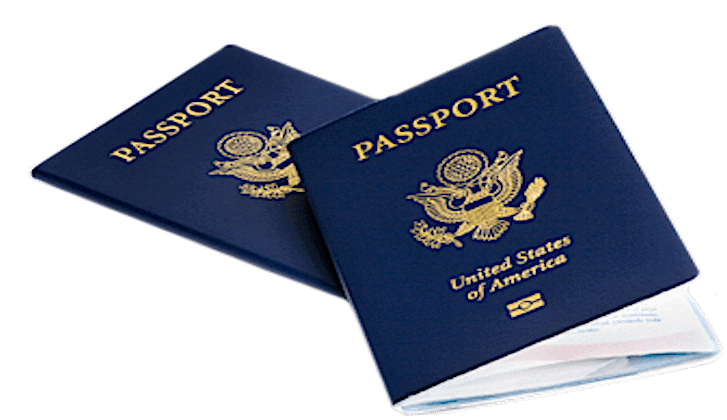
Differences Between a U.S. Passport Card vs. Passport Book
In This Post...
While both the Passport Card and Passport Book are proof of your identity and U.S. citizenship, they have very different rules and regulations. Here’s a general way to note the difference between the two forms of government-issued identification.
A Passport Card was primarily designed for northern and southern U.S. land and sea border crossings. A Passport Book is what you need for international air travel and to re-enter the United States. But the devil is in the details.
What is a U.S. Passport Card?
The size of a credit card, a U.S. Passport Card is convenient to carry, costs less than a traditional U.S. Passport Book and does some of the same things that a Passport Book allows you to do. However, a U.S. Passport Card has certain limitations that affect your ability for foreign travel.

While the Passport Card is cheaper to buy than a Passport Book, the card can only be used for re-entry into the U.S. from four countries. These countries are Bermuda, Canada, the Caribbean and Mexico.
READ NEXT: Do You Need a U.S. Passport for the Bahamas?
Think of a Passport Card as a surface-only official identification card. But remember: it’s only good for re-entry by land or sea into the United States from the four countries listed. There’s no way around this requirement.
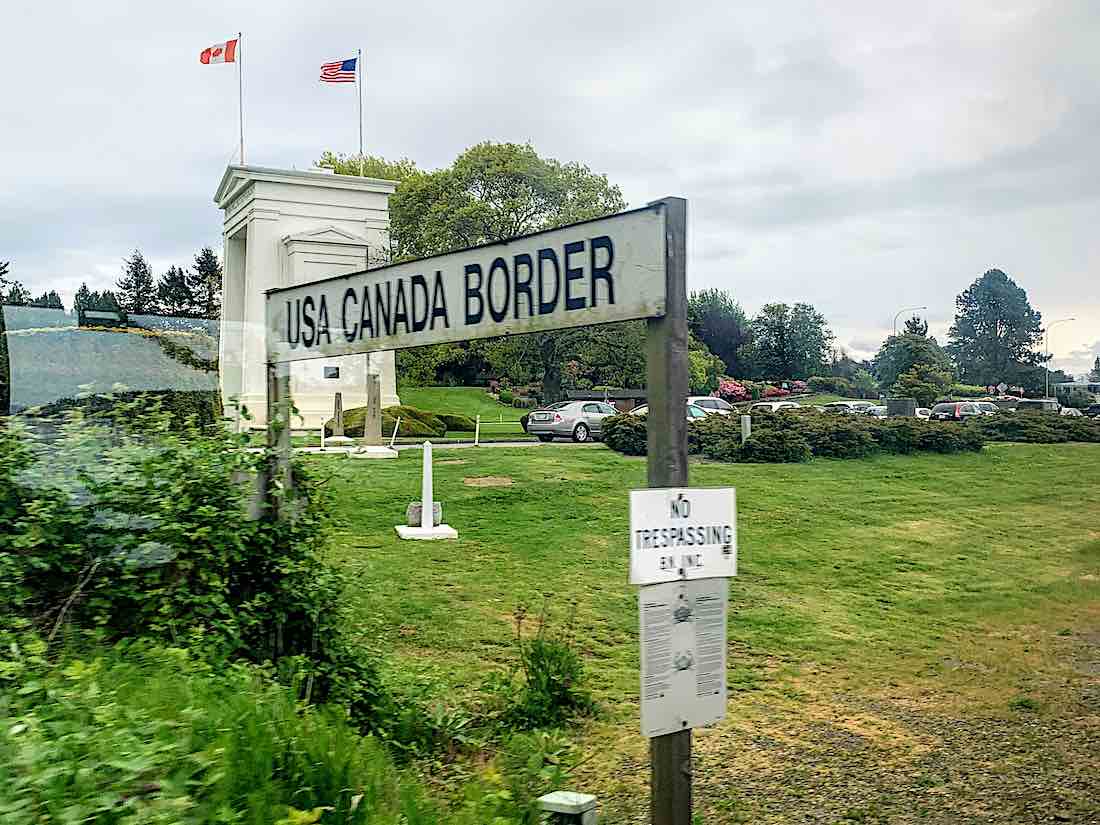
A Passport Card was created mainly for the convenience of residents in border cities to make it easier for commuters and workers to cross back and forth. If all you ever plan to take are cruises that depart and return to the U.S., if you ride Amtrak between the USA and Canada or simply want to drive across the border, a Passport Card will work for you.
You cannot use a Passport Card for international air travel. Period.
RELATED: Do You Need A Passport Card or Passport Book for an Alaska Cruise
What is a Passport Book
A U.S. Passport Book is exactly as described; a book. The familiar navy-colored Passport Book has many pages to be filled with colorful, unique and interesting country stamps. You will receive a stamp on the pages as you go through customs upon arrival into or departure from a country. There is also room for visa stamps.
It’s the only document that the U.S. government will allow you to use to enter a foreign country other than Bermuda, Canada, Mexico and the Caribbean, and then re-enter the United States on your return. If you plan a transatlantic cruise from the U.S. to Europe and then fly home, you will need a Passport Book to re-enter the United States. A Passport Card is not enough.
As stated above, a Passport Card is enough identification for a cruise that departs from and returns to the U.S. However, it’s important to remember that if you’re on a cruise and you should become ill and have to fly home, your surface-travel-only passport card will definitely delay your re-entry into the US. Have a Book and you could be on a flight home asap.
Deciding on a Passport Card vs. Passport Book for Your Cruise
Even though you can take a cruise from the U.S. and return to the U.S. using only a Passport Card, there could be reasons why you should have a Passport Book instead.
- Injury or sickness: If you become ill or injured on your cruise, you could be admitted to a local hospital for care and treatment. If that happens, there’s a good chance the ship will depart without you. If this should happen, you will need a U.S. Passport Book to fly home.
- Cruise ship problems – It’s not a frequent problem but cruise ships can be damages or have mechanical issues that are unable to be repaired during your cruise. If this happens, you may need to fly home from a country which requires a passport to set foot on land. You would also need a U.S Passport Book to fly home.
Taking a Cruise Without a Passport Card or Book
Oddly enough, U.S. citizens may still cruise to certain destinations without either a Book or Card. On closed-loop cruises, those that begin and end in a U.S. port, all you need to take are your ship’s boarding pass, a government photo I.D. if you’re over 16 years and a certified birth certificate or certificate of U.S. naturalization.
Eight closed-loop cruise itineraries from the U.S. do not need a Book or Card. These destinations include Alaska, the Bahamas, the Caribbean, Cozumel and Baja-Mexico, Canada/New England and Hawai’i.
The consequences of trying to return home to the U.S. without a passport could be life-threatening. Should something unexpected prevent your ship from returning to the U.S. or you or a travel companion are ill or injured, traveling with only a certified birth certificate will certainly prevent a timely return to the United States.
Cost of a Passport Card vs. Passport Book
The cost of a Card versus a Book is about half as expensive. According to the U.S. government travel website, those 16 years of age and up and applying for the first time, the cost of a Passport Book is $145.00. At nearly half as much, the cost for a Passport Card is $65 for those also 16 years and older.
Sixteen years and younger, the first-time Book is $115 and the Card is only $50. An expediting fee is also available if you need a Passport Book in a hurry. The government mails all Passport Cards first-class USPS.
If you plan a closed-loop cruise and the $80 difference between a Book and a Card is a hardship, then maybe you shouldn’t go on a cruise. Is it really worth the risk should something happen to you or your ship and you’d have to fly home? You’ll most likely have an exorbitant fee for an expedited U.S. passport sent to wherever you are stranded.
My suggestion is if you plan any international travel just bite the bullet and get a Passport Book. Besides, at the end of the day, it’s always fun to look back through the pages in your Book and see all of the neat, colorful and odd-looking stamps you’ve accrued over the years.
You’ll Also Love

How I Traveled to Alaska for My First Alaska Cruise…Without Flying

New Carnival Itineraries for 2016 with Port Canaveral and Galveston

How to Navigate Between Venice Italy Cruise Ports, Train Station and More

5 Best Reasons to Buy Your Cruise Ship’s Shore Excursion

A Tale of Three AirBnB Vacation Rentals

Driving Directions to Port Canaveral – All The Details
What are you looking for.
Updated on November 22, 2021 by Sherry Laskin
Celebrity Blog
- Special Occasions
- Choosing a Cruise
- Planning / Booking A Cruise
- Preparing For Your Cruise
- What To Expect On A Cruise
- Australia, New Zealand & the Pacific
- Central America
- East Coast & Bermuda
- Mexican Riviera
- South America & Antarctica
- Destinations
Find Out if You Need a Passport to Go on a Cruise
Last updated: February 28th, 2022
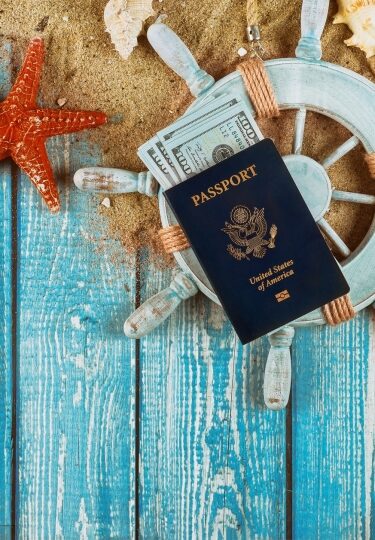
- Find a Cruise
Figuring out if you need a passport to go on a cruise isn’t quite as straightforward as you might think. The answer largely depends on the destination of your cruise, which port you’re embarking and disembarking from, and which forms of ID you already have.
We always recommend you bring a U.S. passport onboard, regardless of your cruise itinerary. Traveling with a passport will always make your trip easier, especially if you encounter any unforeseen circumstances during your vacation, such as an unexpected stop at an unscheduled international port due to bad weather or a family emergency that would require you to book a last-minute plane ticket home.
That being said, if you’re a U.S. citizen and want to know if you need a passport to go on your upcoming cruise, we’ve compiled some useful information to help you figure out which specific destinations and cruise itineraries require you to bring a passport and which ones don’t.
Do you need a passport if you fly to an international cruise departure port?
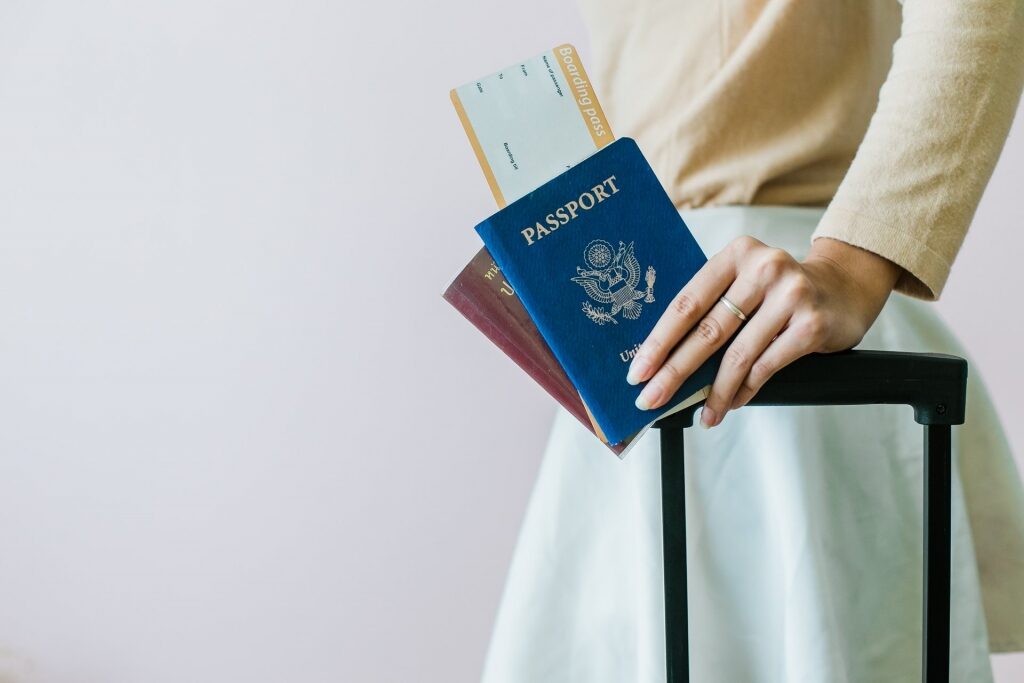
If you’re doing any international air travel to get to your cruise, then you are required to bring a valid U.S. passport book in order to board the plane.
A U.S. passport book is a government-issued document that allows U.S. citizens to travel internationally by air, land, and sea.
A valid U.S. passport book is mandatory even if you’re flying to or from Canada, Mexico, Bermuda, and the Caribbean from the United States.
Do you need a passport to go on a cruise to the Bahamas?

If you are cruising to the Bahamas from the U.S., the following documents are acceptable: passport book, passport card, Trusted Traveler card (Nexus, SENTRI, or FAST), or an enhanced driver’s license.
If you are traveling to the Bahamas on a closed-loop cruise, which is a cruise that starts and ends at the same U.S. port, you may travel with a state-issued ID (such as a driver’s license) and an original U.S. birth certificate.
Children under 16 can also travel to the Bahamas on a cruise with an original birth certificate, naturalization certificate, or certificate of citizenship. Children under 19 can use these same documents only if they are traveling with a school, church group, sports team, or other organization with adult supervision.
Do you need a passport for a cruise to Mexico?
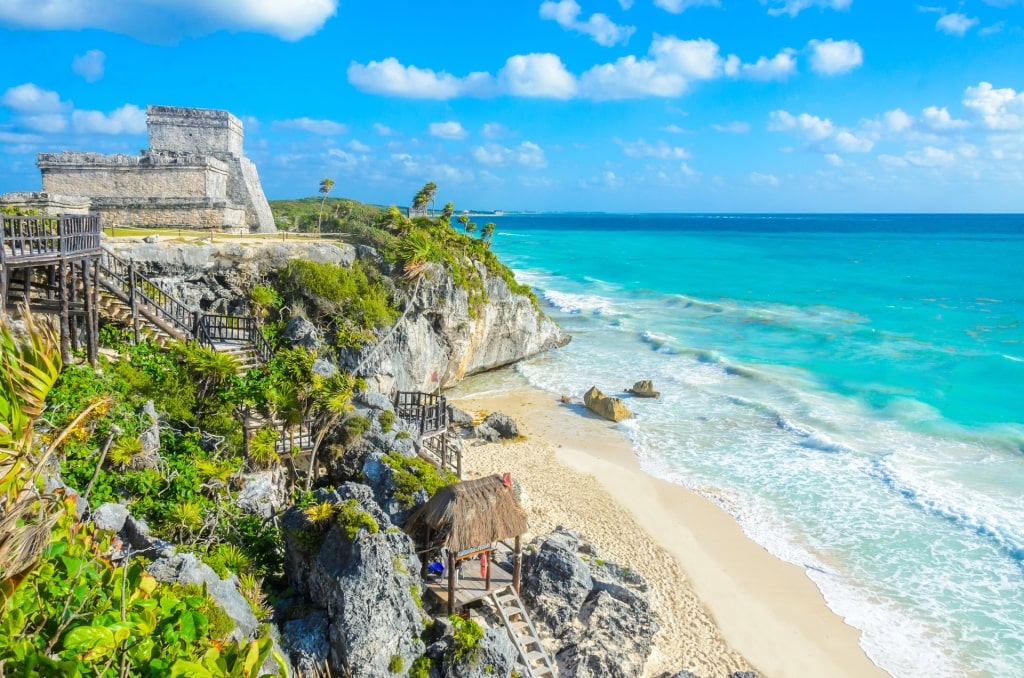
If you are planning a cruise to Mexico , make sure you bring one of the following documents: U.S. passport book, passport card, Trusted Traveler card (Nexus, SENTRI, or FAST), or an enhanced driver’s license.
If you are cruising to Mexico on a closed-loop cruise, (a journey that starts and ends at the same U.S. port), you can enter without a passport and show a state-issued ID and an original birth certificate instead.
Do you need a passport for a Caribbean cruise?
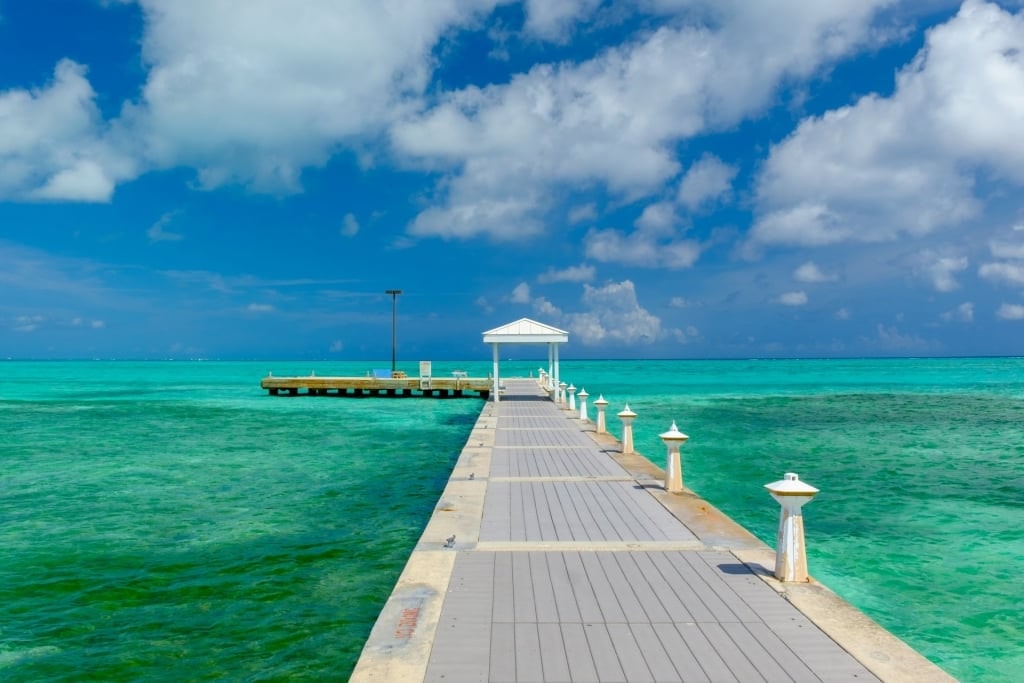
If you are cruising to the Caribbean , you will need to enter with either your U.S. passport book, passport card, Trusted Traveler card (Nexus, SENTRI, or FAST), or an enhanced driver’s license.
If you are aboard a Caribbean closed-loop cruise, (a cruise that departs and ends at the same U.S. port), you can travel with a state-issued ID (for example: your driver’s license) and an original birth certificate. You must have both of these documents in order to be able to travel without a passport.
The following Caribbean countries require the above documentation: Anguilla, Antigua and Barbuda, Aruba, Bahamas, Bermuda, British Virgin Islands, Cayman Islands, Dominica, Dominican Republic, Grenada, Jamaica, Montserrat, Netherlands Antilles, St. Kitts and Nevis, St. Lucia, St. Vincent and the Grenadines, and Turks and Caicos.
Read: Best Beaches in Antigua
Do you need a passport to go on a cruise to Alaska?

Even though Alaska is part of the United States, most cruise itineraries will require you to travel with a U.S. passport.
If you’re on a cruise to Alaska that begins or ends in Canada, you are required to carry a passport book or passport card. (If you are traveling by plane to get to your departure port in Canada, you must travel with a U.S. passport book.)
If you’re traveling on a closed-loop cruise to Alaska that starts and ends in the same U.S. port, you can travel with a passport card or a state-issued ID (such as a driver’s license) and an original birth certificate.
Do you need a passport for a cruise to Hawaii?

Even though Hawaii is a U.S. state, all of our cruise itineraries require you to travel with a U.S. passport book or card.
Our Hawaii cruise itineraries either depart or end in Canada, so U.S. citizens are required to bring a passport book or passport card. (If you are traveling by plane to get to your departure port in Canada or are flying back into the United States, you must travel with a U.S. passport book.)
Do you need a passport for a cruise to Bermuda?
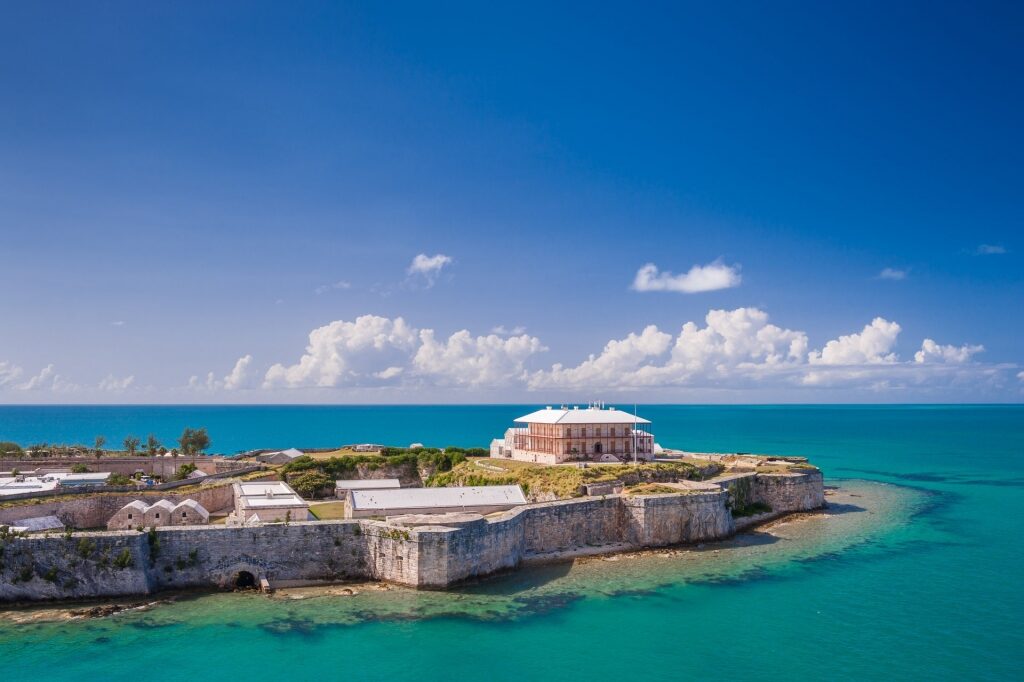
If you are cruising to Bermuda , then you don’t necessarily need a U.S. passport book, but can use any of the following documents instead: U.S. passport card, Trusted Traveler card (Nexus, SENTRI, or FAST card), or an enhanced driver’s license.
If you take a closed-loop cruise to Bermuda, you can leave your passport at home and travel instead with a state-issued ID and an original birth certificate.
Regardless, we always recommend traveling with a U.S. passport book, in case there are any inconveniences during your trip.
What’s a passport card and should you get one?
If you’re traveling by land or sea to Canada, Mexico, Bermuda, and the Caribbean, you can bring a U.S. passport card instead of a passport book. However, a passport card does not work for air travel into Canada, Mexico, Bermuda, or the Caribbean.
There are some advantages to traveling with a passport card rather than a passport book, mainly cost and portability. Currently, a passport card costs only $65 to issue, while issuing a passport book is $145. For adults, both are valid for 10 years before you need to renew them. For children under 16, both are valid for 5 years.
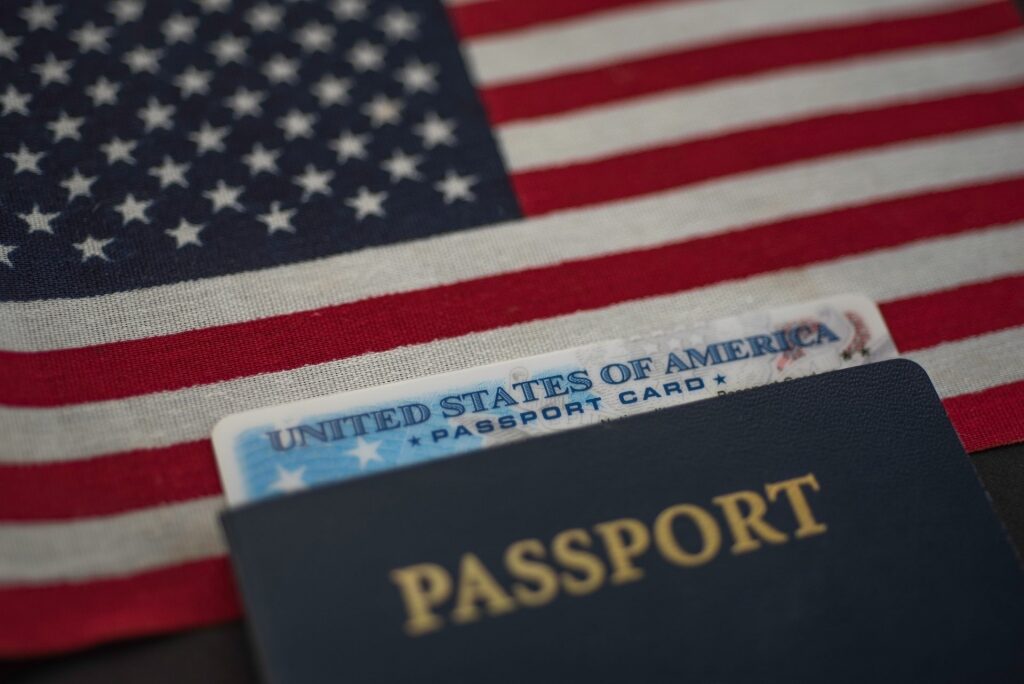
Another benefit of a passport card is its smaller size. A passport book is 5” x 3.5” when closed and contains several pages, while a passport card can easily fit into a wallet, money belt, or pocket. (Just make sure it’s a secure pocket with a zipper so it doesn’t fall out.)
That being said, we always recommend bringing a valid passport book on your cruise. If you don’t make it back to your cruise ship on time after visiting a port, or if a family emergency requires you to fly back home from one of your cruise destinations, a passport card won’t allow you to travel on a plane. In case there are any unforeseen inconveniences, a passport book will always work as a valid travel document via air, land, and sea.
Do kids need a passport for cruises?
If children under the age of 16 are traveling internationally by air, they will need a valid U.S. passport.

If they are traveling to Canada, Mexico, Bermuda, and the Caribbean by sea on a cruise, they can travel with a U.S. passport, passport card, trusted traveler card, or an original birth certificate, naturalization certificate, or certificate of citizenship. Children under 19 can use these same documents only if they are traveling with a school, church group, or other organization with adult supervision.
In addition, be sure to review other requirements for children, such as a signed and notarized letter from a missing parent if the child isn’t traveling with both parents, or a written letter of consent if the child is traveling as part of a group without an adult that is 21 or older.
When do you need a passport book to cruise?
You will always need a passport book if you are starting and ending your cruise in different ports. Even if your cruise starts and ends in U.S. cities, you will still be required to have a valid U.S. passport book in order to board.

You will also always need a passport book if you are traveling on a cruise that requires you to take an international flight to get to your departure port, such as those cruises departing from Europe, South America, or Asia. You won’t be able to board an international flight without a passport book.
If you are cruising to a destination not located within Canada, Mexico, the Caribbean, or Bermuda, you need to bring a U.S. passport book; a passport card will not be allowed as a valid travel document.
Even if you are traveling on a closed-loop cruise (one that starts and ends in the same port) to Canada, Mexico, the Caribbean, or Bermuda, it is always recommended that you bring a passport book in case of an emergency or unforeseen situation that might require air travel.
Do you always need a passport card or passport booklet to cruise?
We always recommend carrying a passport book or a passport card while vacationing on a cruise. That being said, there are certain types of cruises where you’ll be able to board with other types of documentation if you do not have either a passport book or passport card.
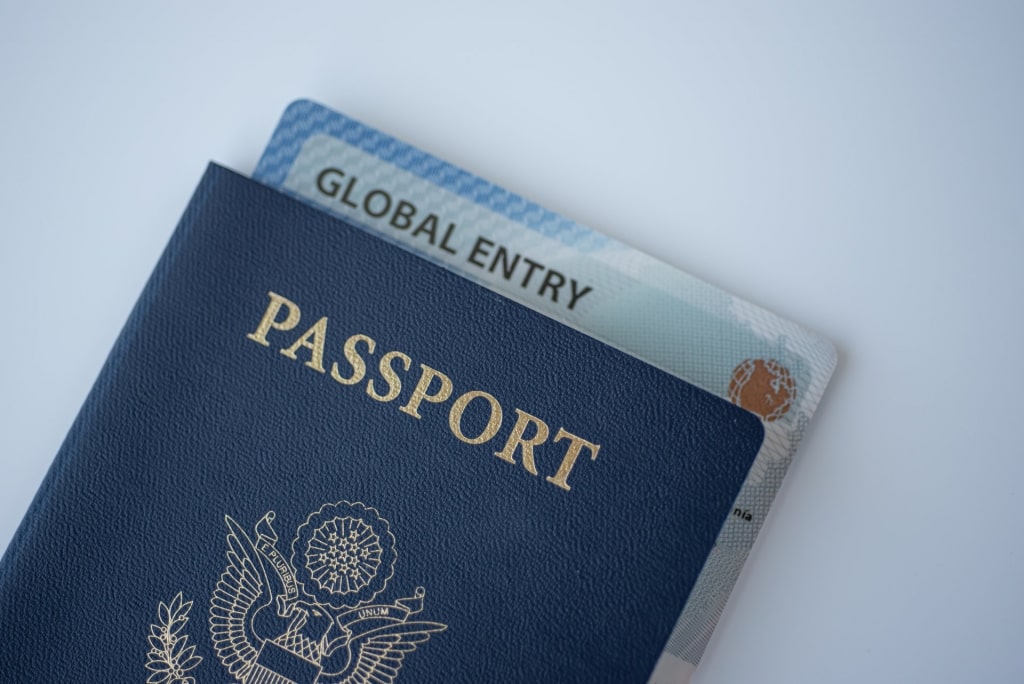
U.S. citizens traveling on closed-loop cruises to either Mexico, Canada, Bermuda, or the Caribbean can travel with the following documentation:
- U.S. passport book or card
- Trusted Traveler card (Nexus, SENTRI, FAST)
- Enhanced Driver’s License
- An original copy of your government-issued birth certificate or naturalization certificate and a government-issued photo ID (such as a driver’s license)
Should you bring a passport on closed-loop cruises?
While some cruises don’t require you to travel with a U.S. passport book, we always recommend you bring one on your trip, even on a closed-loop cruise . If you need to fly back to the United States during your cruise, you’ll only be able to board a plane with a passport book.
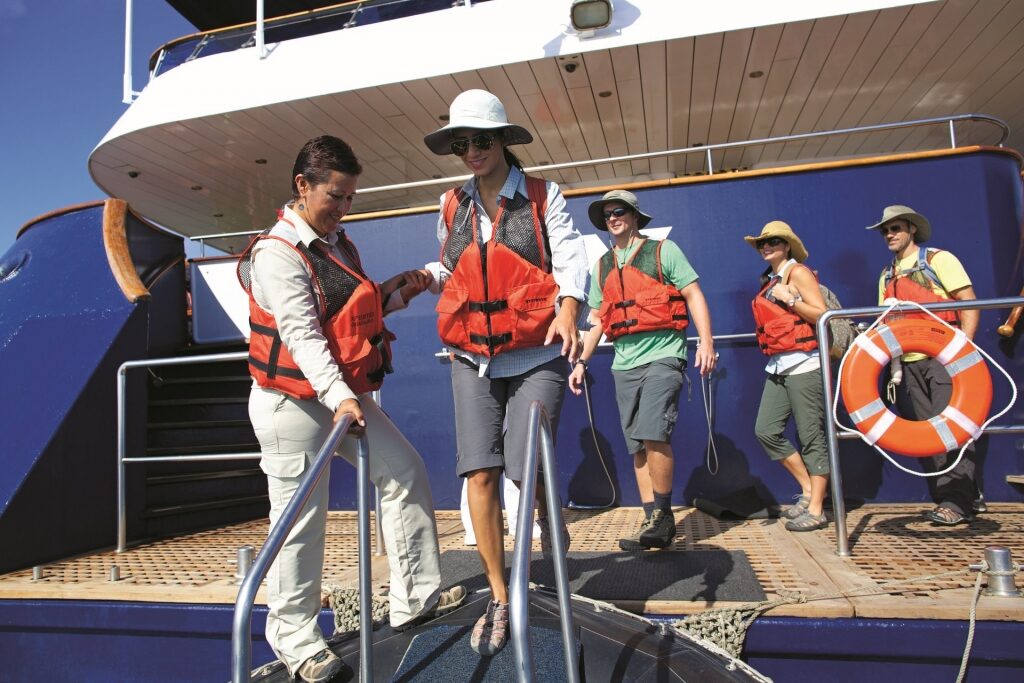
If you happen to miss the ship’s departure time during an international excursion, it will be much harder to meet your ship in the next port without a passport book on you. (Keep in mind that a shore excursion booked through Celebrity Cruises will always guarantee you’ll make it back to your ship on time.)
Also some ports of call may require a passport to enter even if you don’t need one to board your cruise. It’s always wise to research your itinerary and find out what kind of documentation each country requires of U.S. citizens in order to enter.
What else should you know about cruising with a passport?
Having a passport doesn’t mean your vacation is a go yet. You’ll also want to double check when your passport expires, as many countries require a passport to be valid for six months after the date of your planned departure. If you’re on a cruise, this means making sure your passport is still valid for another six months following the last day of the cruise.
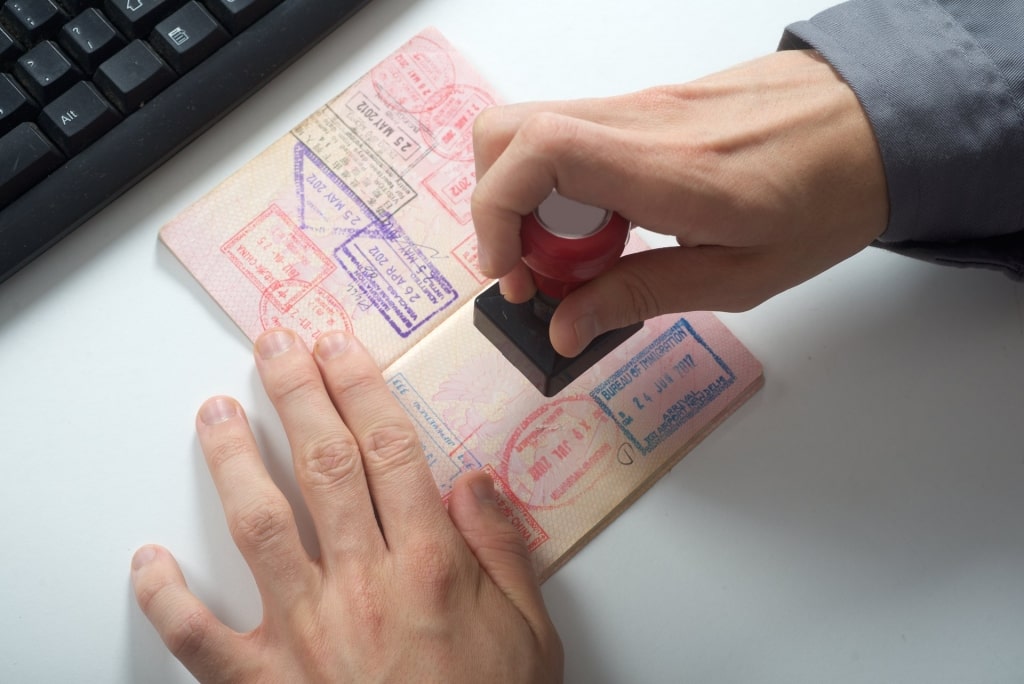
Another thing you’ll want to check is the amount of blank pages in your passport. You should have at least one blank page for each country you’re visiting. If you don’t have enough pages left for stamps, you’ll need to renew your passport before your trip.
One major advantage of traveling on a cruise is that international customs are mostly handled for you. Before boarding, you’ll provide your passport number and other applicable information to the cruise line, which then provides this information to customs authorities in the international ports of call you’ll visit. Once this is arranged, you’ll simply get off the ship and enjoy your destination without having to go through customs each time. However, you should always double check what the passport protocol is for the cruise ports you’re visiting.
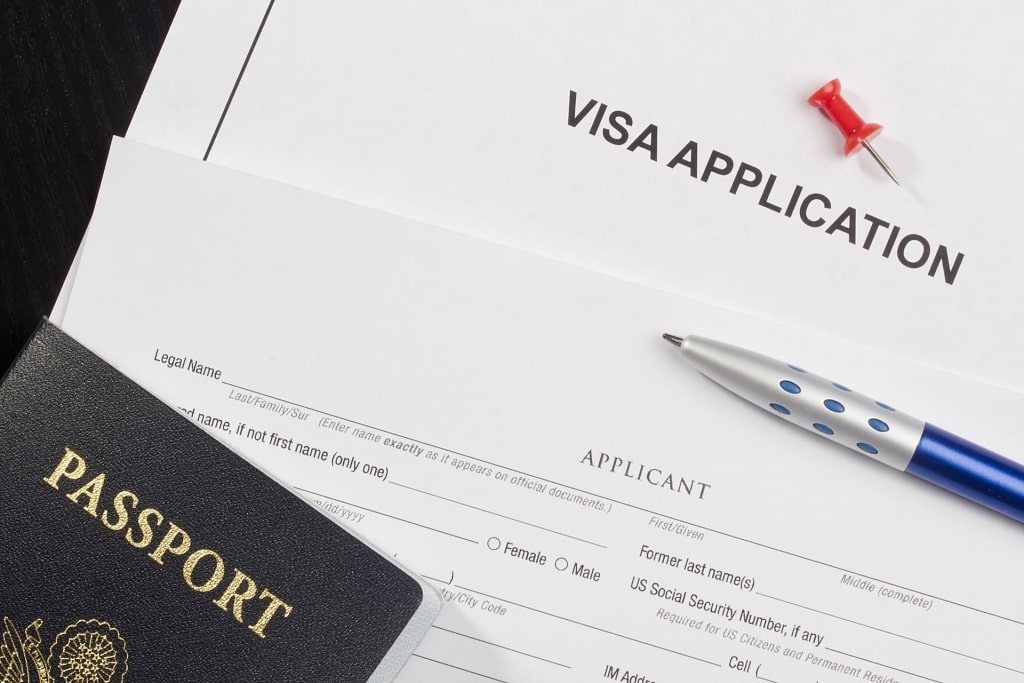
It is also your responsibility to obtain any necessary visas you may need during your cruise. Be sure to research the visa requirements for each country you’ll be visiting during your itinerary. You’ll also be in charge of any fees relating to the visa.
Note: For some itineraries, the cruise line may hold onto your passport during the duration of your trip in order to expedite the clearance formalities at each port of call. In those cases, we recommend making color photocopies of your passport to carry with you during visits to international ports.
How do you keep your passport safe on a cruise?
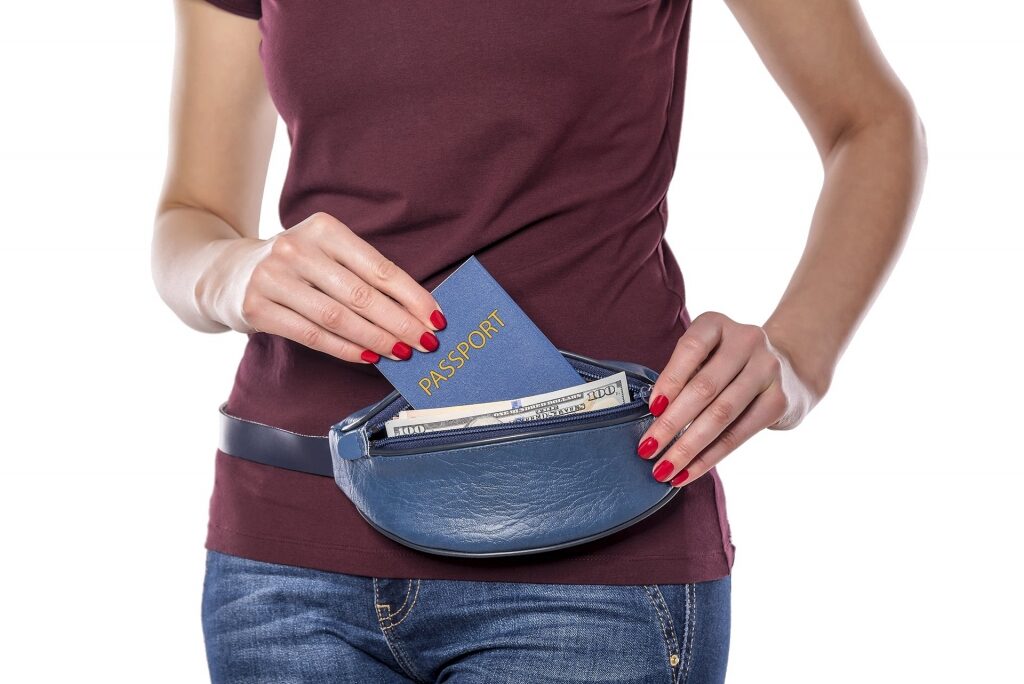
The most popular way to keep your passport safe while on a cruise is to store it inside a money belt or passport necklace. A money belt is a soft pouch with a zipper that can fit your passport, some cash, and a couple of credit cards. The pouch is connected to a belt that sits comfortably around your waist.
A passport necklace is similar, but is worn around your neck and inside your shirt instead. It’s not usually as discreet as a money belt, but is often more convenient and allows for easier access to your travel documents and money.
Traveling with a passport cover is also wise since it helps to keep your passport in pristine condition. Some countries won’t accept a damaged passport in customs.
What if you lose your passport during a cruise?
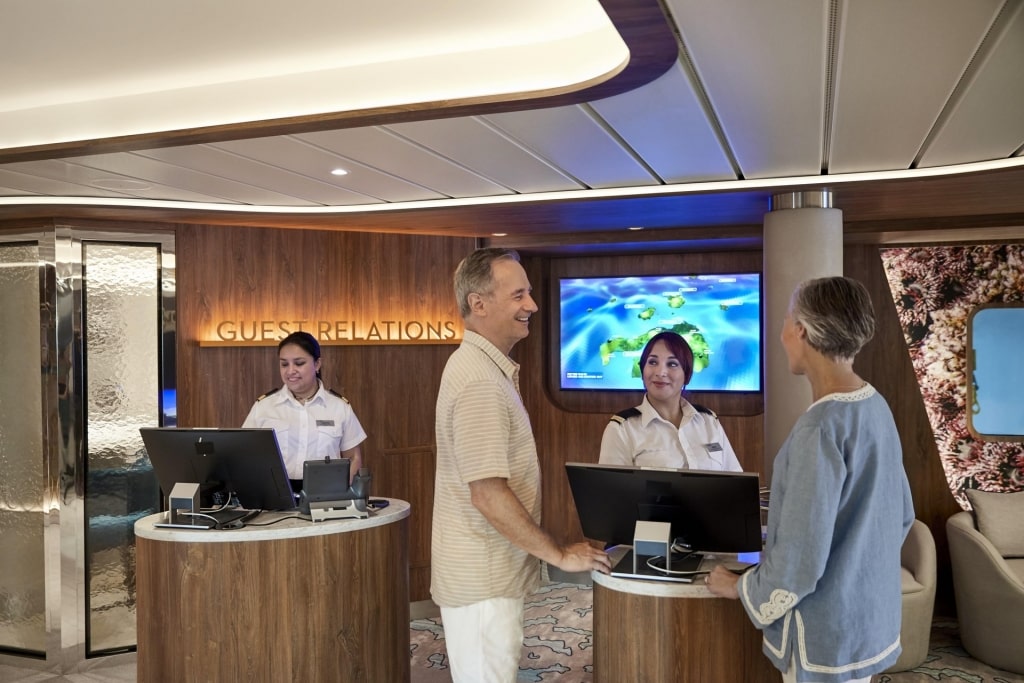
If you lose your passport while on a cruise, the first thing you need to do is notify the nearest U.S. consulate in order to get a replacement passport issued. Also, contact the guest relations department on your cruise ship so they can provide guidance on how to handle the rest of your cruise before you get your replacement passport.
If you lose your passport on the ship, you should fill out a lost property report with the guest relations department on board.
To help eliminate any chance of losing your passport while on the ship, we recommend keeping it in your stateroom or suite. The in-room safes are easy to use and will keep your passport in a secure place at all times. When you’re on your cruise, there is no need to carry a passport on you since you’ll use your Sea Pass card for all transactions.
Grab That Passport and Book Your Cruise!
Do you have all the right documentation in place for your preferred cruise itinerary? Then you’re all set to book your cruise and start a wonderful vacation. Browse our cruise itineraries or call one of our vacation specialists at 1-800-852-8086 to get started.
Related Itineraries
Bahamas & Perfect Day
- 3 nights ON CELEBRITY REFLECTION
- DEPARTING FROM FORT LAUDERDALE, FLORIDA
- Starting from $617 USD
- Starting from $630 USD
Western Caribbean & Perfect Day
- 6 nights ON CELEBRITY BEYOND
- Starting from $1021 USD
- 5 nights ON CELEBRITY REFLECTION
Aruba, Bonaire & Curacao
- 8 nights ON CELEBRITY BEYOND
- Starting from $2474 USD
Bahamas, Mexico & Cayman
- Starting from $2687 USD
Related Articles
13 Sustainable Shore Excursions to Add to Your Bucket List
Port Vs. Starboard: What Side of the Ship Is Best?
What Is Wave Season?
When’s the Best Time to Go on a Cruise?
Expert Tips for Pre-Cruise Bookings: Flights, Hotels, & More
How to Get Last Minute Cruise Deals
How to Plan a Cruise
Cruising After COVID: What’s Different?
12 Best Cruises for Couples
Ways Our Retreat Butler and Retreat Host Enhance Your Cruise Vacation
Best 5-Day Cruises
18 Mother’s Day Travel Gifts to Celebrate Mom
Free Vacation Planning Services

CALL US 888-751-7804
Sign Up for Special Offers
I would like to receive electronic Promotional messages from Celebrity Cruises Inc. You can unsubscribe at anytime. Please view our Privacy Policy .
- First Name *
- Last Name *
- Email Address *
- Country * Country Afghanistan Albania Algeria American Samoa Andorra Angola Antigua and Barbuda Argentina Armenia Australia Austria Azerbaijan Bahamas Bahrain Bangladesh Barbados Belarus Belgium Belize Benin Bermuda Bhutan Bolivia Bosnia and Herzegovina Botswana Brazil Brunei Bulgaria Burkina Faso Burundi Cambodia Cameroon Canada Cape Verde Cayman Islands Central African Republic Chad Chile China Colombia Comoros Congo, Democratic Republic of the Congo, Republic of the Costa Rica Côte d'Ivoire Croatia Cuba Curaçao Cyprus Czech Republic Denmark Djibouti Dominica Dominican Republic East Timor Ecuador Egypt El Salvador Equatorial Guinea Eritrea Estonia Ethiopia Faroe Islands Fiji Finland France French Polynesia Gabon Gambia Georgia Germany Ghana Greece Greenland Grenada Guam Guatemala Guinea Guinea-Bissau Guyana Haiti Honduras Hong Kong Hungary Iceland India Indonesia Iran Iraq Ireland Israel Italy Jamaica Japan Jordan Kazakhstan Kenya Kiribati North Korea South Korea Kosovo Kuwait Kyrgyzstan Laos Latvia Lebanon Lesotho Liberia Libya Liechtenstein Lithuania Luxembourg Macedonia Madagascar Malawi Malaysia Maldives Mali Malta Marshall Islands Mauritania Mauritius Mexico Micronesia Moldova Monaco Mongolia Montenegro Morocco Mozambique Myanmar Namibia Nauru Nepal Netherlands New Zealand Nicaragua Niger Nigeria Northern Mariana Islands Norway Oman Pakistan Palau Palestine, State of Panama Papua New Guinea Paraguay Peru Philippines Poland Portugal Puerto Rico Qatar Romania Russia Rwanda Saint Kitts and Nevis Saint Lucia Saint Vincent and the Grenadines Samoa San Marino Sao Tome and Principe Saudi Arabia Senegal Serbia Seychelles Sierra Leone Singapore Sint Maarten Slovakia Slovenia Solomon Islands Somalia South Africa Spain Sri Lanka Sudan Sudan, South Suriname Swaziland Sweden Switzerland Syria Taiwan Tajikistan Tanzania Thailand Togo Tonga Trinidad and Tobago Tunisia Turkey Turkmenistan Tuvalu Uganda Ukraine United Arab Emirates United Kingdom United States Uruguay Uzbekistan Vanuatu Vatican City Venezuela Vietnam Virgin Islands, British Virgin Islands, U.S. Yemen Zambia Zimbabwe

STAY IN THE KNOW
Thank you for subscribing.
See you on board soon.

- Cruise Advice
Passport Card vs. Book: Which Should I Get?
Erica Silverstein
- December 6, 2021
A passport card vs. book — which one should I get? You booked your cruise, you’ve purchased plane tickets, and now you’re scratching your head about whether you need a U.S. passport book or passport card (or neither?) for your future sailing.
Bring the wrong I.D. and your vacation could be in jeopardy.
You must show the correct documentation for your specific trip, or airport or cruise port officials will keep you from reaching your ship.
Don’t stress. We break down the passport book vs. card conundrum into simple terms, so you can pick the type of passport that’s best for you.
What is a passport book?
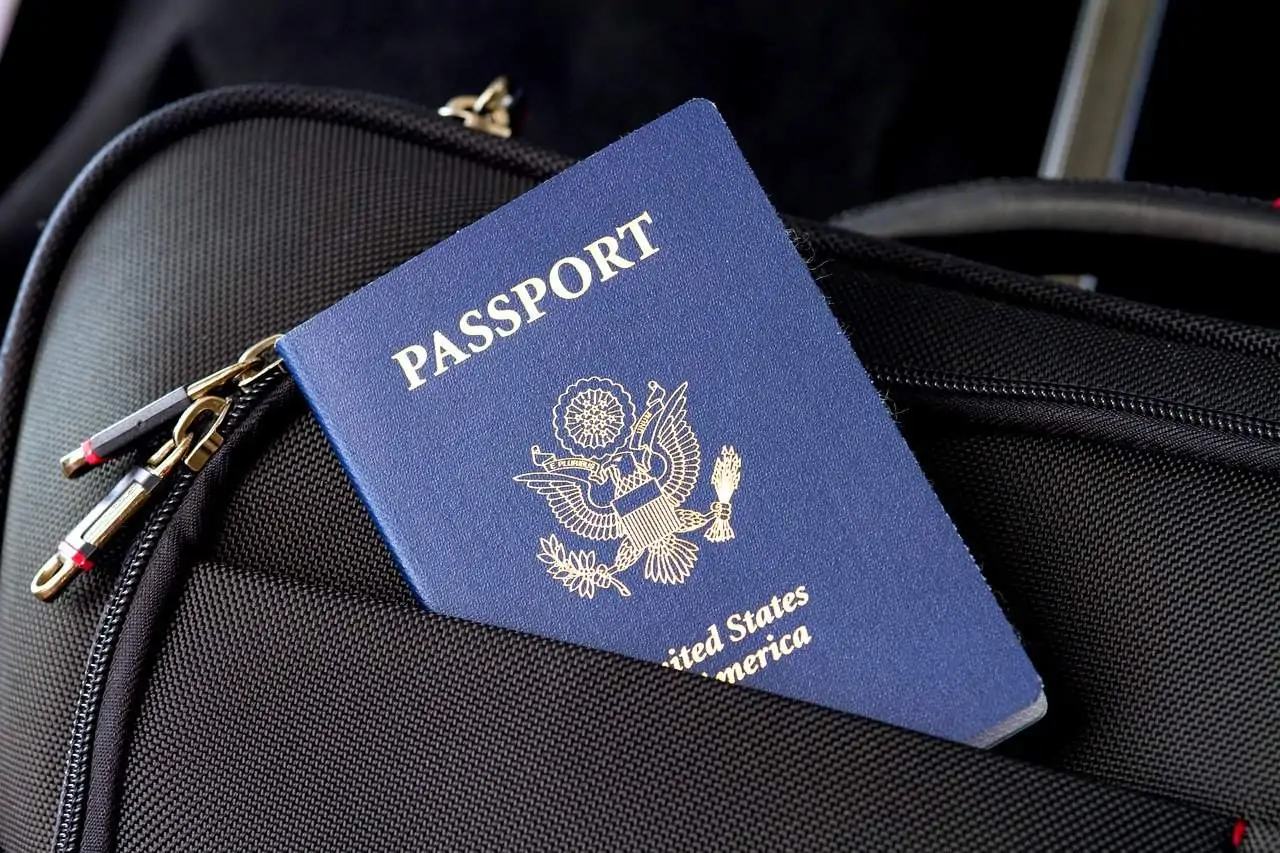
A U.S. passport book is a small booklet with a blue cover and your photo inside that contains 28 pages, most of them blank for customs and immigration officials to stamp as you enter a foreign country. It serves as proper identification for traveling between the United States and foreign countries by air, land, or sea.
Essentially, a U.S. passport book is your one-size-fits-all photo I.D. No matter where in the world you’re traveling or by what means of transport, your passport book will be accepted as valid identification.
But you have to pay fees for that flexibility. A passport book for adults is valid for 10 years and costs $145 for the first one and $110 for renewals. Minors under the age of 16 can get a passport book valid for five years for $115.
What is a passport card?

A U.S. passport card is a wallet-sized photo I.D. card — the size of a credit card and akin to a driver’s license — that can be used to re-enter the country at land border crossings with Canada and Mexico.
Most notably for cruisers, passport cards are also accepted identification at seaports of entry when returning by ship from destinations in Canada, Mexico, the Caribbean, and Bermuda.
A passport card, however, cannot be used when traveling by air to foreign countries or returning by air to the U.S. from an international destination.
What does that mean for cruisers? You can’t use a passport card if you’re flying to any foreign cruise port, even neighboring countries.
For example, if your cruise departs from Barbados, and you have to fly internationally to meet your ship, a U.S. passport card is not a valid I.D.
If your cruise sails from Florida, visits Caribbean islands (including Barbados) and returns to Florida, a passport card would be acceptable identification.
In addition, if you plan on taking an excursion on your Alaska cruise into the Canadian Yukon, you could present a passport card at the border if you’re crossing in a tour bus or on the White Pass and Yukon Railroad.
However, if you choose to charter a flight from Skagway to Whitehorse in the Yukon territory, you would need a passport book.
Passport cards are cheaper than passport books, and they’re also valid for 10 years. They cost $65 for the first one or $30 for a renewal (or if you already have a passport book). Minors under the age of 16 pay only $15 for a card, valid for five years.
Passport Card vs. Passport Book: Which Should You Choose?
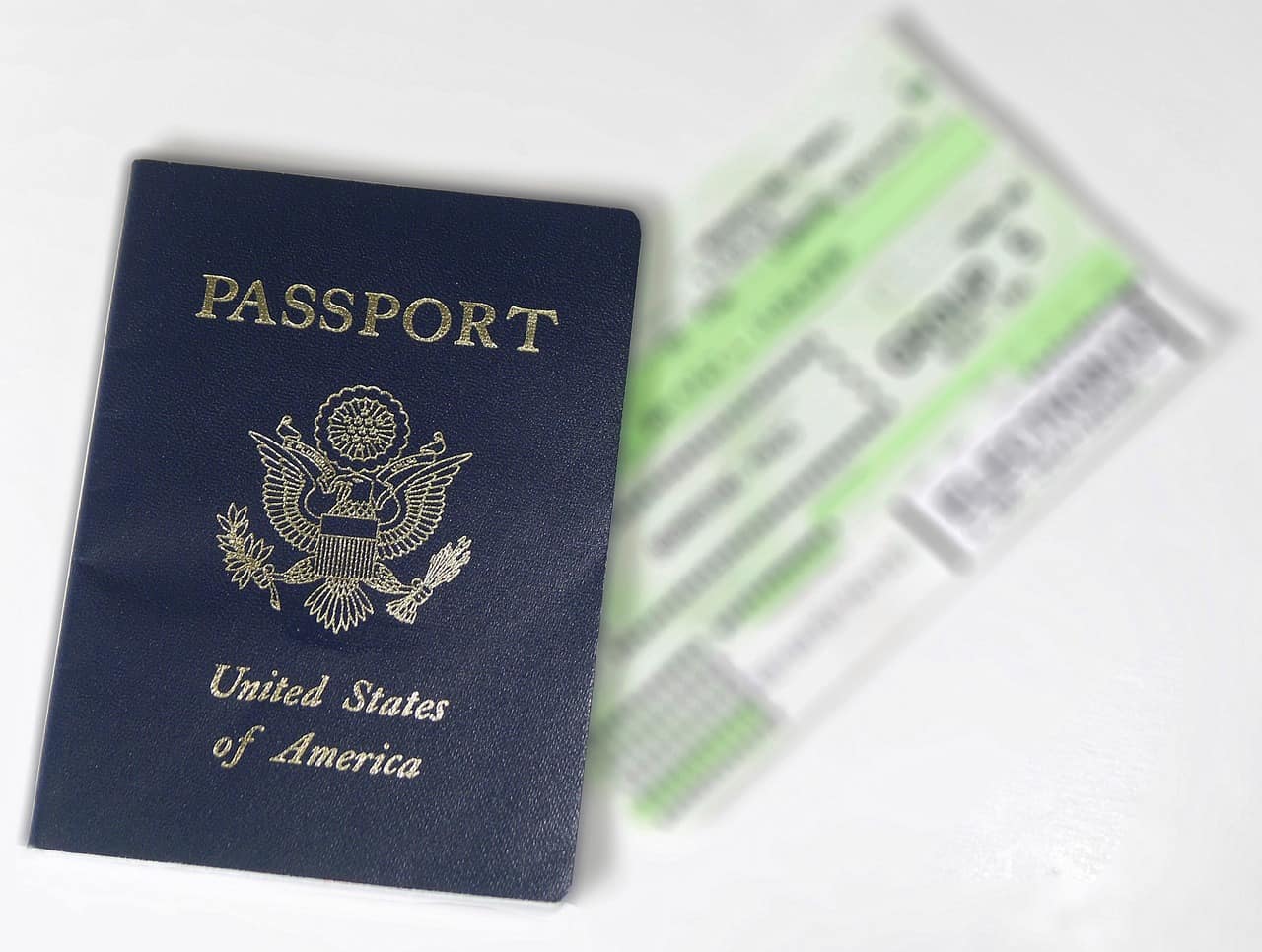
How should you decide if you should get a passport card or a passport book? If you can afford a passport book, we recommend you apply for one of those because they are the most versatile form of identification. This is your proof of citizenship.
For example, if you’re sailing a roundtrip from Boston to Bermuda, where a passport is not technically required, but an emergency forces you to debark the ship in Hamilton and fly home. You won’t be able to reenter the U.S. by air unless you have a passport book.
You will need a passport book for any trip that requires you to fly internationally. If you think you might like to travel abroad in the next 10 years, go for the more expensive option.
If you only plan on sailing out of U.S. homeports to destinations in the U.S., Canada, Mexico, Bermuda, or the Caribbean for the foreseeable future — with no plans for international air travel — you can save money with a passport card.
Do I Need a Passport to Cruise?
But wait — you might not even need a passport card. A clause in the Western Hemisphere Travel Initiative says that all closed-loop cruises (i.e., those that depart and return from the same U.S. homeport and visit destinations in Canada, Mexico, the Caribbean, and Bermuda and nowhere else) only require a photo I.D. (such as a driver’s license) and a birth certificate. No passport is needed.
For example, if you are taking a roundtrip cruise to the Bahamas from Florida, a birth certificate and driver’s license will satisfy the documentation requirements.
READ MORE: 5 Ways to Protect Your Passport
One-way cruises are not included in this exemption, such as repositioning cruises from New York to Ft. Lauderdale or southbound Alaska sailings from Seward to Vancouver.
These types of trips would require, at minimum, a passport card.
One more reason to get the passport card: Beginning October 1, 2021, the TSA will require all domestic air travelers to present a REAL ID-compliant driver’s license.
If your current driver’s license is not compliant but also won’t expire for several years, a passport card will work as proper identification on domestic flights, as well as for sea- and land-based border crossings into the U.S.
Going with a passport card in this case saves you from having to deal with the DMV to renew your driver’s license when it’s not expired, or taking your passport book with you everywhere and risking forgetting it or losing it.
The passport card can live conveniently in your wallet, and is less expensive to replace if you misplace it.
Bottom line: Determine what type of trips you’re likely to take, for business and pleasure, in the next few years, and decide on a passport book or card based on that.
When in doubt, spend the money for a passport book, and you’re covered for any international travel situation you may encounter.
Pin it for later!

Recent Posts
P&o cruise ships (uk) by size: biggest to smallest, first disney ship to lookout cay gets mixed feedback, cruise passenger dead after going overboard near norway, parents miss cruise ship, teen sails on without them, share this post, related posts.

Carnival Quietly Removes Benefit from VIFP Loyalty Program

Disney Cruise Ship Passenger Arrested at Port Everglades

Bringing you 15 years of cruise industry experience. Cruise Radio prioritizes well-balanced cruise news coverage and accurate reporting, paired with ship reviews and tips.
Quick links
Cruise Radio, LLC © Copyright 2009-2024 | Website Designed By Insider Perks, Inc

Guide to Cruise Passport Policies for U.S. Travelers
- Laura Soper
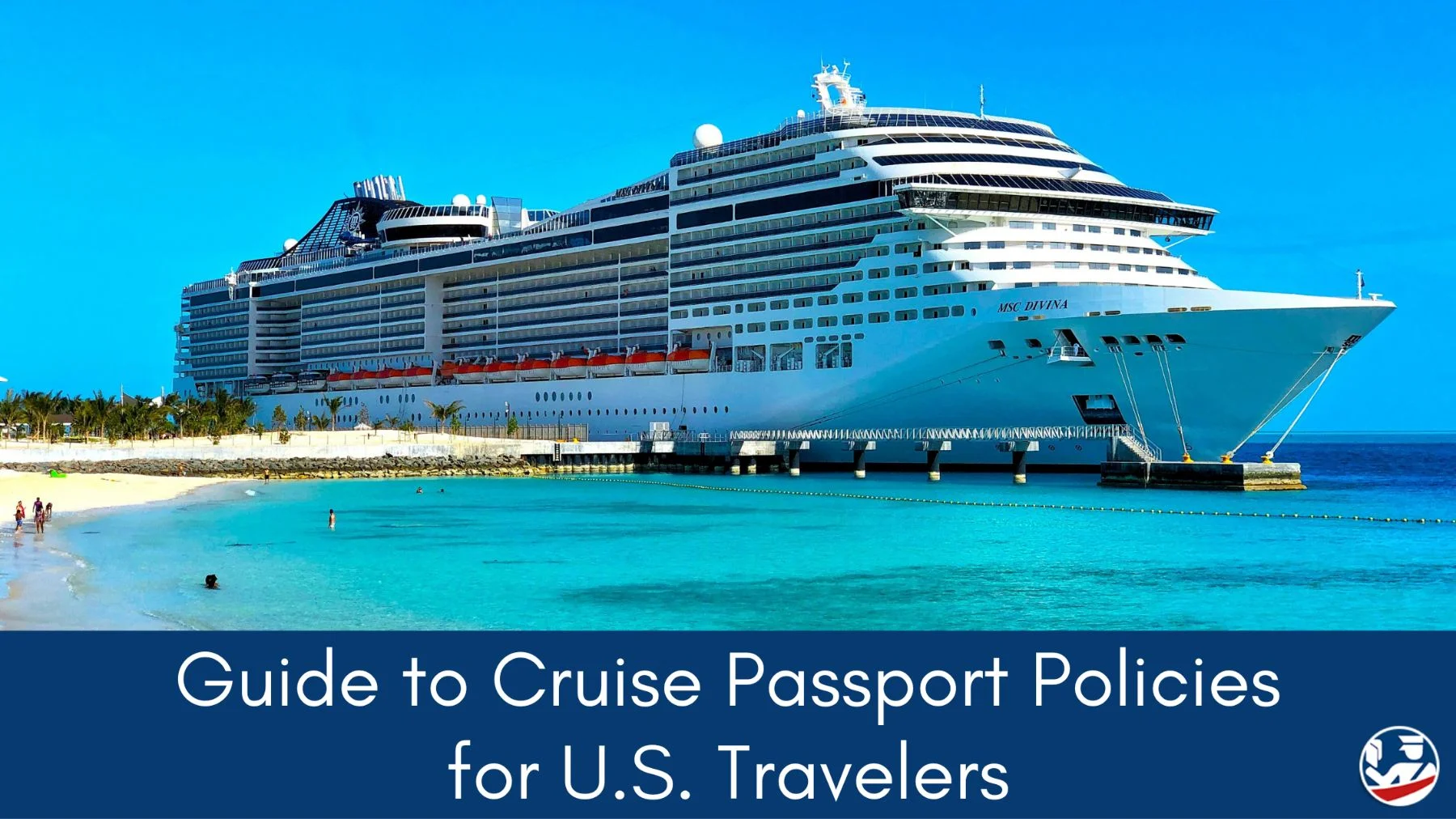
Embarking on a cruise is an exhilarating experience, a perfect way to combine international travel, daily entertainment, and opportunities for relaxation—without having to worry about the logistics and challenges of air and land travel.
Cruises offer a unique opportunity for travelers to experience multiple destinations all in a single vacation. However, this also means adhering to the diverse entry and exit regulations of each country visited.
For U.S. citizens, there are specific passport and travel document policies tied to both the cruise line and destination that must be adhered to for a smooth vacation. Our guide aims to explain these requirements, preparing you for potential emergencies and ensuring you’re well-equipped for cruise travel.
We’ll also spotlight the most sought-after cruise lines among American travelers , delving into what sets each one apart, their distinctive offerings, and the travel documents you’ll need for a hassle-free voyage.
In this guide, we will explore all these detailed elements of cruise travel to make sure you understand exactly what you need to know for your upcoming vacation on the seas.
Table of Contents
Do you need a passport for a cruise.
Unfortunately, there isn’t a set answer to this question. Whether you need a passport for a cruise can be both yes and no —it largely depends on the specifics of your cruise .
If you’re embarking on a closed-loop cruise, which starts and ends at the same U.S. port, U.S. citizens might not need a passport. However, for cruises that begin or end in foreign ports, a passport is typically required.
The cruise line you’re traveling with may also have its own documentation requirements, which can include a passport book or passport card regardless of the itinerary.
Furthermore, even if your cruise doesn’t require a passport, the international destinations you visit might. Some countries mandate a passport for entry, regardless of how you arrive—land, air, or sea.
So, while a passport may not always be necessary for a cruise, it’s a good idea to carry one for maximum flexibility.
Always check with your cruise line and the countries on your itinerary to understand the specific requirements.
Let’s get into the details of the different types of cruises and the general travel requirements to help you better understand the travel documents you will need for your voyage.
Understanding the Basics of Cruise Travel Documentation
The need for a passport during cruise travel is primarily determined by the nature of the cruise— specifically, whether it’s a closed-loop or open-loop cruise.
Closed-Loop Cruises
A closed-loop cruise starts and ends at the same U.S. port. For instance, a week-long cruise around the Western Caribbean & Perfect Day , which begins and ends in Miami, Florida, is a closed-loop cruise. It visits several countries like the Bahamas, Jamaica, Haiti, and Grand Cayman, but returns to the original U.S. port.
Passport books are typically not required for closed-loop cruises, U.S. citizens can usually exit and enter the United States with a birth certificate and government-issued ID (such as a driver’s license); however, every cruise line has a strict set of required travel documents that guests must present and carry during their voyage. For specific travel requirements, it is always best to check with the cruise line.
Open-Loop Cruises
On the other hand, open-loop cruises always require a valid U.S. passport for American travelers. Open-loop cruises start in one U.S. port and conclude in a different U.S. port. An example would be a 16-day Panama Canal cruise that sets sail from Seattle and ends its journey in New Orleans. Open-loop cruises require guests to present and carry a valid passport book with (typically) at least 6 months of validity remaining after the last date of their cruise.
Popular Cruise Lines and Their Passport Policies
Setting sail on a cruise is an exciting getaway, offering an abundance of memorable experiences and opportunities for serene relaxation against stunning ocean views. As you plan your voyage, a top priority must be to acquaint yourself with the necessary travel documents and passport rules of the leading cruise lines .
Each cruise line has specific guidelines to ensure guests can enjoy a smooth, enjoyable journey and make the most of their travel itineraries.
Below, we outline the passport rules for American citizens and required travel documents for the most popular cruise lines.
Carnival Cruise Line
Carnival Cruise Line , often hailed as “America’s Cruise Line,” is a leading figure in the world of cruising. Established in 1972, it has since evolved into the most favored cruise line globally. The company boasts a fleet of 26 ships, each offering unforgettable vacation experiences.
Carnival Cruise Lines currently offers 13 cruise destinations for guests to choose from. Each cruise is packed with a wide array of entertainment choices , from stage shows and live music to deck parties and casinos , ensuring fun-filled days and nights.
Travel Requirements
The cruise type determines the travel document requirements for American travelers:
- Open-loop cruises: These cruises start at one U.S. port and finish at a different one. Guests must present and carry a passport book that is valid for at least 6 months beyond the end date of their cruise.
- a boarding pass, and
- a government-issued photo ID if they are 16 years or older (such as a driver’s license)
There are some exceptions to these general rules. Some cruises might include stops at foreign ports that require a valid passport book to leave the ship. Also, if a cruise starts or ends in a foreign country, including Canada, or if it starts and ends at different U.S. ports, a valid passport book is always required .
Please note that if the cruise includes a visit to Colombia or Greenland, a passport book that is valid for at least 6 months beyond the end of travel is required .
- an Enhanced Driver’s License (EDL) ,
- a government-issued birth certificate, or
- a valid passport book
Passport Requirements and Validity for American Citizens and Children
Carnival Cruise Line strongly advises having a valid passport book while traveling . A passport book is not only the most reliable form of identification but if guests unexpectedly need to fly to or from the U.S. during their cruise, not having a passport book could cause big problems and delays.
- Do you need a passport in a hurry? Expedite your passport in as little as 24-48 hours !
Visa Requirements
Requirements for travel visas depend on your cruise destinations. All guests are responsible for obtaining appropriate visas to cruise. Check with the embassy or consular offices of the destination countries for more information.
- Need a travel visa ? Find out how to get your travel visa— fast!
It’s always a good idea to check with Carnival Cruise Line or your travel agency for the most up-to-date information. For more information on travel requirements for Carnival Cruise Lines, visit the What travel documents do I need to bring? page for a complete explanation.
Royal Caribbean International
Founded in 1968, Royal Caribbean International is a leading cruise line brand and a subsidiary of the Royal Caribbean Group. Based in Miami, it’s the largest cruise line by revenue and the second-largest by passenger count.
The company boasts a fleet of 28 ships, including the world’s five largest cruise vessels. Royal Caribbean Cruises journeys to over 300 destinations in more than 60 countries across 6 continents . They provide a plethora of onboard activities , top-notch dining options , captivating entertainment , and luxurious accommodations that are tailored to both adults and families .
For American travelers, the following travel documents are required:
- Open-loop cruises: These cruises start and end at different U.S. ports, oftentimes these cruises embark or disembark in a foreign country. For these cruises, guests must present and carry a passport book that is valid for at least 6 months after the day the cruise ends.
- a government-issued birth certificate, and
- a laminated government-issued picture ID (such as a driver’s license)
While U.S. citizens aren’t currently required to have passports on closed-loop cruises, Royal Caribbean International highly recommends travelers carry a valid passport book as it is the most reliable form of identification. Additionally, if an unforeseen situation arises where guests have to take a flight to or from the U.S. during their cruise, not possessing a valid passport book could result in substantial delays and challenges.
- Do you need a passport fast? Expedite your passport in as little as 24-48 hours !
Guests are responsible for figuring out and getting all required travel visas before their cruise starts. Travelers should reach out to the embassy or consular services of each country they’ll visit on their cruise to understand specific visa requirements, details, forms, and fees.
- Need a travel visa for your cruise? Visit our guide to getting your travel visa expedited .
These requirements may change over time, so it’s always a good idea to check with Royal Caribbean or your travel agency for the most up-to-date information. For more in-depth information regarding required travel documents for getting on board Royal Caribbean International, see the Getting Onboard with The Right Travel Documents page.
Norwegian Cruise Line
For over half a century, Norwegian Cruise Line has been a trailblazer in the global cruise industry. It operates three brands: Norwegian Cruise Line, Oceania Cruises, and Regent Seven Seas Cruises. Together, these brands boast a fleet of 28 ships with nearly 60,000 berths, offering travel itineraries to more than 490 destinations across the globe.
Aboard their ships, guests are treated to a diverse array of dining options , both complementary and specialty. Entertainment includes a variety of live music and comedy to Broadway-style shows .
Accommodations cater to all types of travelers. Their Regent Seven Seas and Oceania Cruises , in particular, are renowned for their luxury .
For American travelers taking cruises aboard the Norwegian Cruise Line, the travel requirements vary depending on the type of cruise:
- Open-Loop Cruises: For these cruises, passport books must be valid for at least 6 months after the last day of travel.
- U.S. state-issued original or certified copy of their birth certificate (hospital certificates are not acceptable),
- a Consular Report of Birth Abroad, or a Certificate of Naturalization, and
- a government-issued photo ID (such as a driver’s license)
Children under 16: U.S. or Canadian children under 16 are exempt from the passport requirement for land and sea border crossings. Instead of a passport book, they can use:
- a U.S. state-issued original or certified copy of their birth certificate,
- a Consular Report of Birth Abroad, or
- a Certificate of Naturalization as proof of citizenship for entry into the U.S. by land or by sea
Even though passports aren’t currently required for U.S. citizens on closed-loop cruises, Norwegian Cruise Line strongly recommends traveling with a valid passport book . This is because a passport book is the most reliable form of identification. Also, if travelers need to fly to or from the U.S. unexpectedly during their cruise, they may face significant delays and complications without a valid passport book.
- Visit our expert guides to learn how to get a new passport or passport renewal quickly.
Regarding travel visas , each traveler must check with the embassy or consulate offices for travel visa requirements and get the necessary visas. This applies to all countries they plan to visit on their journey, including any countries they might stop at during connecting flights.
- Visit our guide to expediting travel visas and get your passport in time for your cruise.
Please note that these requirements can change, so it’s always a good idea to check the latest information on the Norwegian Cruise Line’s website before your trip.
Princess Cruises
Established in 1965, Princess Cruises , a prominent name in the cruise industry, began its journey with a single ship heading to Mexico. Today, it boasts a fleet of 15 state-of-the-art ships, offering a variety of onboard amenities and top-notch service, serving millions of passengers annually.
Princess Cruises provides a global experience, covering over 100 countries across all seven continents , including North America, Europe, Asia, and Australia. It offers a wide range of travel itineraries, from a week to over 3 months , visiting more than 380 ports and including over 100 UNESCO World Heritage Sites in their destinations.
For U.S. citizens traveling aboard Princess Cruises, travel requirements vary depending on the type of cruise:
- Open-Loop Cruises: A valid passport book is required for all international itineraries , including Africa, Asia, Australia & New Zealand, Europe, India, Central and South America, Panama Canal (partial and full transit), Caribbean (any sailings that visit Martinique or Guadeloupe), South Pacific & Tahiti, and World Cruises. The passport’s required validity is based on the destination; however, it is strongly advised to carry a passport with at least 6 months of validity remaining after the date of return.
- a Permanent Resident Card (ARC/I-55 card),
- a temporary ARC/I-55 card, and
- a valid government-issued photo identification (such as a driver’s license), or
- a passport book with an “ARC” stamp
- U.S. passport card ,
- U.S.-issued Enhanced Driver’s License (EDL) ,
- U.S.-issued Identification Card (issued to minors and non-drivers)
In all cases, traveling with a valid passport book is highly recommended , as unexpected situations may arise requiring you to leave the ship. Passports should be valid for at least 6 months beyond the end of your travel and contain blank pages for endorsements and visas. Princess Cruises also recommends carrying a second government-issued photo ID while in port.
- Expedite a new passport application or a passport renewal in less than a week !
If needed, U.S. citizens can find travel visa requirements in the ‘Notices’ section of their Travel Summary . Visas can be acquired directly from the embassy or consulate of the countries to be visited. The requirements for visas and other documents can differ based on the destination and may change without any advance notice. Guests should double-check the visa requirements with the consulate 14 to 30 days before the cruise starts .
- Expediting travel visas can ensure you get the travel documents you need in time for your cruise.
Travel requirements are subject to change. It is imperative to check for the most current information by visiting Princess Cruises’ FAQs: Travel Document Requirements page before your trip.
Disney Cruise Line
Disney Cruise Line , a branch of The Walt Disney Company, has been providing unique oceanic journeys since 1996. It boasts a fleet of 6 luxury liners, each offering state-of-the-art amenities , exceptional service , and exclusive Disney activities . The fleet, which includes Disney Magic, Disney Wonder, Disney Dream, Disney Fantasy, Disney Wish, and the latest addition, Disney Treasure, provides a range of onboard experiences from thrilling water slides and themed dining to Broadway-style shows and children’s clubs making it the most popular cruise line for families and Disney fans alike.
The cruise line operates in over 100 countries across all 7 continents , with voyages ranging from 2 to 15 nights . It is acclaimed for its meticulous attention to detail , playful character interactions , and creative dining experiences.
American citizens traveling aboard Disney Cruise Lines must follow the travel requirements outlined by their specific type of cruise:
- Open-Loop Cruises: For all international itineraries, U.S. citizens must have a valid passport book with at least 6 months of validity remaining after the end of the trip.
- a valid U.S. passport book,
- a U.S. passport card , or
- a Trusted Traveler Card (NEXUS, FAST).
U.S. citizens aged 15 and younger can travel with:
- a valid U.S. Passport ,
- U.S. Passport Card ,
- a Trusted Traveler Card (NEXUS, FAST), or
- a state-issued birth certificate, and
- Domestic Cruises: The same rules as closed-loop cruises apply.
In all cases, Disney Cruise Line recommends guests carry a valid passport book during their voyage. A passport is not just a dependable means of identification, but it’s also crucial in case guests need to unexpectedly travel by air to or from the U.S. during their cruise. The absence of a passport could lead to significant issues and delays. Passport books should be valid for at least 3 months or 6 months after the end of the cruise , depending on the destination countries’ requirements. Disney Cruise Lines also suggests travelers carry a second government-issued photo ID while in port.
- Do you need passports soon? You can expedite your passport and passports for children and be ready for travel in a week or less!
As for travel visas , it is the guest’s responsibility to identify and obtain all the necessary travel visas before embarking on the cruise.
- Our guide to expediting travel visas can ensure your whole family is ready for their Disney cruise.
It’s important to remember that these requirements may vary, so it’s recommended to verify the most recent information on the Disney Cruise Line’s website or consult with the relevant authorities or travel agent before your journey.
Holland America Line
Holland America Line , founded in 1873, operates 11 ships offering over 500 cruises to 470+ ports in 98 countries . Their cruises range from short trips to 128-day voyages , covering all continents . They’re known for their quality service , excellent food , elegant decor, and diverse entertainment . Their ships feature modern amenities like high-tech shows and extensive art collections . Holland America Line is lauded for catering to multi-generational groups making it an ideal cruise line for families .
The travel requirements for American citizens aboard Holland America Line depend on the type of cruise and the destination countries:
- Open-Loop Cruises: Valid passport books are mandatory for cruises that start in one U.S. port and end in another. Passport books must have at least 6 months of validity remaining after the end date of the cruise.
For Holland America cruises that stop at islands in the French West Indies, a valid passport book is required, regardless of the departure port.
- proof of citizenship (e.g., an original or certified copy of a government-issued birth certificate and a government-issued photo ID)
- a valid passport book, or
- a passport card
- a standard government-issued photo ID (such as a valid driver’s license)
- Real ID,
- permanent resident card, or
U.S. citizens under 16 are exempt from the passport requirement for land and sea border crossings. Instead of a passport, children can use an original or certified copy of a U.S. state-issued birth certificate . However, when minors are traveling with only one adult, Holland America requires all passengers to have a valid passport book .
Regardless of cruise type, Holland America strongly advises all guests to carry a passport book that is valid for at least 6 months beyond the end of their travel date . This is because passengers who need to fly to or from the U.S. unexpectedly during their cruise will likely face significant delays and complications related to booking airline tickets and entering the U.S. if they do not have a valid passport.
- Departing soon? Expedite your new passport application or passport renewal today.
Travel visa requirements differ based on the destination. It is the individual guest’s responsibility to confirm travel visa requirements with the destination’s embassy or consulate .
- Our expert guide to expediting travel visas has all the information you need to get your visa in time for your trip.
Please remember that these are general guidelines and specific requirements may change based on the exact cruise itinerary. Always check the most recent information before your trip. For more detailed information, you can visit the Holland America Line’s official website’s Identification Requirements page .
Regardless of your chosen cruise line, the key to a smooth and hassle-free voyage lies in understanding and compliance with the travel document requirements and U.S. passport policies of your chosen cruise line . It’s evident that all cruise lines strongly advise guests to carry a valid passport during their voyage , as passports are the most dependable form of identification. They are also necessary for entry into destination countries and in case you need to fly back to the United States . By being well-prepared and knowledgeable about these specific guidelines, you can ensure a smooth sailing experience on your ocean adventure.
Preparing for Your Cruise: Passport Tips and Best Practices
Taking a cruise abroad is an unforgettable experience and an amazing way to see the world. To help you better prepare for your voyage, here are a few passport tips and best practices to follow when planning your international cruise .
First-Time Passport Applicants
If you’re new to the passport application process, we can help! Our guide on How to Obtain a U.S. Passport offers essential step-by-step instructions on the entire process from filling out the right application form and gathering your supporting documents to choosing the right passport service and finding the best passport application acceptance location that fits your needs.
Need your new passport in a hurry? We can help with that too! Our instructions on How to Expedite a New Passport Application: A Complete Guide is a comprehensive manual on everything you need to know and do to get your new passport—fast!
Currently, routine passport processing is about 6 to 8 weeks , expedited processing takes about 2 to 3 weeks and rushed expedited processing is possible within 14 days .
Visit our page, How Long Does It Take to Get a Passport? , for the most up-to-date application processing times.
Don’t miss out on making the most of your cruise’s travel itinerary, get your passport book now and get excited to explore the world!
U.S. Passport Expiration Requirements for Cruises
When a valid U.S. passport book is required, the validity of the passport book is recommended with either 3 months or 6 months (most common) of validity remaining beyond the last day of the cruise.
- What does that mean? It means that the expiration date on your passport book must be at least 3 or 6 months past the last day of your cruise.
- 3-Month Rule – Country Requirements & More
- 6-Month Rule for U.S. Passports
If your passport book does not meet this requirement, you may be denied boarding or entry into certain countries, even if your cruise ship is your primary means of travel. Furthermore, you could be denied entry when returning to the United States if you had to return by air. Therefore, it’s crucial to check your passport’s expiration date well in advance of your cruise departure date.
Travel Requirements for Cruises with Kids
Children are not permitted to travel alone on a cruise. Cruise line policies vary, but generally, children (under 18 years old) must be accompanied by an approved adult (21 years or older) within the same travel group . To verify age requirements and rules for minors, check the age policies of the cruise line you are traveling with.
If you’re an adult traveling with a minor (under 16 years old)—by land, air, or sea—you must be able to prove that you are the parent or legal guardian of the child. Otherwise, you must present and carry a notarized minor travel consent form that has been signed by the minor’s parents or legal guardians . For more information, see our Free Minor Travel Consent Form page.
According to the U.S. Customs and Border Protection , some countries require a notarized consent letter for children traveling without both parents or a legal guardian . It’s important to check the specific requirements of the destination country by contacting its embassy or consulate in the U.S.
In some cases, children aboard international cruises are required to have a valid passport book . If your child needs a U.S. passport, follow our complete guide on how to get a passport for a minor in just 3 steps .
Need a child’s passport sooner? Find out how to expedite your child’s passport .
Taking a Cruise As A Group Getaway
International cruises are a wonderful getaway for families and groups of friends. Many cruises have such a wide array of activities and experiences—not to mention unforgettable destinations—that there’s always something for everyone in your party to enjoy.
While traveling abroad with a group can create lasting memories, organizing such trips can be challenging—especially when everyone needs passports. The passport process can be complex and time-consuming. In our experience, the easiest and most convenient solution is to hire a passport expediting service .
Passport expediters are professionals who specialize in speeding up the passport application process . They help group travelers get their passports quickly and efficiently, making them a valuable resource for those traveling on short notice or those who wish to avoid the complexities of the passport process. A reliable passport courier can manage the logistical challenges and multiple appointments required for obtaining numerous passports on a tight schedule. A credible passport expeditor can make planning a group cruise a lot smoother and less stressful.
The Benefits Of Carrying A Passport On A Cruise
Passport book requirements vary on the type of cruise you take; however carrying a passport while cruising, even when it’s not explicitly required, provides several advantages:
- Simplified Travel: A passport book, being a globally accepted travel document, streamlines the process of getting on and off the cruise ship. It’s a straightforward way to prove your identity and citizenship, making the embarkation and disembarkation procedures smoother and faster.
- Quicker Customs Clearance: When it comes to going through customs, having a passport book can speed up the process. Customs officials are familiar with passport books, and having one can expedite your passage through these checkpoints compared to using other, multiple forms of identification.
- Prepared for Emergencies: Unforeseen situations or emergencies can happen. An urgent situation might necessitate disembarking in a foreign country and flying back home. In such scenarios, having a valid passport book is required. Other forms of identification and even a passport card cannot take the place of a valid US passport book. It’s the most reliable form of identification for international travel and is mandatory for international airline travel.
- Greater Flexibility: Some countries mandate a passport for entry, regardless of whether you’re arriving by air or sea. Possessing a passport book offers you the freedom and flexibility to explore all the international stops on your cruise itinerary without worrying about entry requirements.
While some cruises may not mandate a passport, it’s always smart planning to carry one. A valid passport acts as your ticket to a hassle-free and enjoyable cruising experience.
Passport Policies for Cruises – FAQs
Q: Do infants and children need passports for cruises?
A: The requirements for travel documents for minors, including infants, largely depend on the type of travel and the cruise line’s specific age policies and travel document requirements.
For closed-loop cruises, guests of all ages do not typically need a passport to travel. However, valid passports are required for open-loop cruises and international cruises that stop at ports outside the United States, Canada, Mexico, and the Caribbean.
Some cruise lines, like Holland America and Princess Cruises, require any minor traveling with only one adult to carry a valid passport. Please check with your specific cruise line to confirm travel documents and age requirements for infants and children.
If you need to obtain a passport for an infant, see our guide: How To Get A Passport For An Infant: A Complete Guide To Baby Passports .
Q: What are the risks of cruising without a passport?
A: Cruising without a passport, while sometimes possible, carries several risks.
- Traveling without a passport can limit your options ; you may not be able to explore certain ports that require a passport.
- Some countries mandate a passport for disembarkation , even for cruise ship passengers.
- If you miss your cruise due to unexpected events like flight delays, a passport may be needed to join the ship at the next port, or else you could miss your entire vacation.
- In emergencies that necessitate a return home by air, a passport is required , and without it, you could be stranded abroad.
Therefore, even if a cruise doesn’t require a passport, it’s advisable to have one to avoid these potential issues.
Q: How does the Western Hemisphere Travel Initiative affect cruise travelers?
A: The Western Hemisphere Travel Initiative (WHTI) impacts cruise travelers, especially those from the U.S. The WHTI requires all travelers to present a valid passport or other approved document that denotes identity and citizenship when entering the U.S. American citizens can use various approved documents like the U.S. Passport, Passport Card , or Enhanced Driver’s License .
For closed-loop cruises (those starting and ending at the same U.S. port), U.S. citizens can enter the U.S. with a birth certificate and government-issued photo ID. However, a passport may still be needed to enter the countries visited during the cruise.
The WHTI aims to bolster border security while making entry into the U.S. more efficient for U.S. citizens and legitimate international travelers. It’s always advisable to check the specific requirements of your cruise line and the countries you’ll be visiting.
Q: Can I use a passport card instead of a passport book for my cruise?
A: While a passport card can be used for some cruises and in some travel situations, it has limitations:
- Travel Restrictions: Passport cards are valid only for land and sea travel between the U.S., Canada, Mexico, Bermuda, and the Caribbean. They’re not valid for international air travel or entry into many foreign countries.
- Cruise Type: U.S. citizens can use a passport card for closed-loop cruises (those starting and ending at the same U.S. port). But it’s not usable for cruises from international homeports.
- Emergency Situations: In emergencies requiring a flight home from a foreign port, a passport card isn’t enough. A passport book is mandatory to fly internationally.
Always check your cruise line’s specific travel document requirements for more information on whether a passport card is an acceptable form of identification for your specific cruise.
Q: What is the best way to get a passport for a cruise in 3 weeks?
A: To get a passport in 3 weeks, we highly recommend that you expedite the process .
Traditional expedited service can take up to 3 weeks —not including mailing times. To skip potential postal service delays, you could make an appointment with a local passport application acceptance center ; however, this option may not get you a passport in 3 weeks.
Rushed expedited service is a better choice when you have a tight schedule. Rushed service can be completed within 14 days —also not including mailing times. Again, to avoid potential delays with the postal service, you could make an appointment at the nearest Regional Passport Agency .
If neither of these two choices fits your short timeline, we recommend using a trusted professional passport expeditor to get your new passport in as few as 24 to 48 hours . A professional expeditor can easily navigate the passport application process on your behalf and make sure that you get your new passport in time for your trip.
Q: Do I need a passport for a cruise to Mexico?
A: While a passport book or a passport card is generally required for travel beyond Mexico’s border and for sea travel, there are exceptions. U.S. citizens entering Mexico by sea for short visits to port towns may not need a passport but should have one if traveling beyond these towns.
For closed-loop cruises (starting and ending at the same U.S. port), a passport isn’t required to re-enter the U.S. However, a passport might still be needed depending on the cruise’s other stops and the cruise line’s requirements.
Always check with your specific cruise line for travel document requirements. Find further information on traveling to Mexico by land, air, or sea: Mexico Entry Requirements – Required Travel Documents for Travel to Mexico .
Still have questions? We’re here to help! Contact us for support in preparing for your next voyage!
About the Author: For over 20 years, the U.S. Passport Service Guide team has helped hundreds of thousands of travelers with their travel document questions and shared advice about how to make traveling abroad simpler, safer, and more enjoyable.

Get the Latest Updates
Related posts.

The 5 Best Canadian Cities for Americans to Visit
Discover the best Canadian cities for Americans! Explore top destinations, travel tips, and quick passport solutions for your trip across the border.

I Received My Passport, But Where Are My Supporting Documents?
Wondering where your supporting documents are after receiving your U.S. passport? Learn when and how you’ll get them back and what to do if there’s a delay

Chinese Travel Visas for US Citizens: A Complete 2024 Guide
Need a Chinese visa? Our detailed guide covers all you need to know to apply successfully. Avoid travel mishaps with clear, concise steps for US travelers.
Protect Your Trip »
Here's when you need (and don't need) a passport to cruise.
It's the type of sailing – closed-loop or open-loop – that largely determines whether or not you need a passport to cruise.
Do You Need a Passport for a Cruise?

Getty Images
A passport isn't always required for cruising.
To determine whether or not you need a passport to cruise, you first need to figure out if the itinerary is closed-loop or open-loop (also known as open-jaw).
Closed-loop cruise: A closed-loop cruise typically doesn't require a passport since it begins and ends in the same U.S. port (though there are some exceptions to this rule).
Example: Royal Caribbean International 's seven-night Western Caribbean & Perfect Day cruise stops in several countries – the Bahamas, Jamaica, Haiti and Grand Cayman – but the itinerary is considered closed-loop because it starts and ends in Fort Lauderdale, Florida.
Open-loop cruise: An open-loop cruise begins in one U.S. port and ends in a different U.S. port.
Example: Carnival Cruise Line 's 16-day Panama Canal from Seattle itinerary is not considered closed-loop because it departs from Seattle and completes its journey in New Orleans.
All of the above regulations have been determined by the Western Hemisphere Travel Initiative: a plan by the departments of State and Homeland Security that determines which documents are acceptable for proving identity and citizenship when entering the United States.
Where to cruise without a passport
There are several destinations where you can cruise without a passport on a closed-loop sailing. They include the following:
- The Bahamas
When looking at cruises to these locations, be mindful of the home ports. The Bahamas, Mexico, Bermuda, the Caribbean and Canada are all foreign ports, which means they only qualify for the passport exception if they are a stop along your cruise itinerary . If the cruise originates in any of these countries, it is likely you will need a passport.
Since Alaska, Hawaii and New England are all U.S. destinations, any closed-loop routes departing from these locations will not require a passport. However, keep in mind that it can be hard to find closed-loop cruises originating in Hawaii or Alaska.
To find closed-loop itineraries for a Hawaiian voyage or Alaskan cruise , try searching for sailings departing from major cities on the West Coast, like Seattle or Los Angeles . By contrast, quite a few closed-loop cruises leave from New England ports, but they are often marketed as Canadian cruises.
Tips on Trips and Expert Picks Newsletter
Travel tips, vacation ideas and more to make your next vacation stellar.
Sign up to receive the latest updates from U.S News & World Report and our trusted partners and sponsors. By clicking submit, you are agreeing to our Terms and Conditions & Privacy Policy .

When you need a passport for closed-loop cruises
Some cruise itineraries include foreign ports that require a passport for disembarkation. This is most commonly an issue for travelers on a closed-loop Caribbean cruise. Barbados , Guadeloupe , Haiti, Martinique , St. Barts , and Trinidad and Tobago all require U.S. citizens to present a valid passport to disembark and enter the country, despite WHTI regulations not requiring a passport for these destinations. Labadee, Royal Caribbean's private island , is an exception and does not require a passport despite its location in Haiti.
If your itinerary includes a country requiring a U.S. passport, your cruise line will require you to have the passport at check-in. Note that your passport must not expire within six months of your arrival in a foreign country or else it won't be considered valid for international travel.
Read: The Easiest Way to Renew Your Passport
Acceptable forms of ID
All travelers – U.S. citizens and foreign nationals alike – must present documents that show identity and citizenship when entering the United States. A U.S. passport can show both. If you don't have one or don't want to bring one, be aware that you may need to present more than one document.
U.S. citizens 16 and older
If you're a U.S. citizen age 16 or older sailing on a closed-loop cruise without your passport, you will need a government-issued photo ID like a driver's license. In addition, you must present a document that proves your U.S. citizenship. These include:
- Passport card
- State-issued enhanced driver's license (EDL)
- Government-issued birth certificate
- Trusted Traveler Program card (NEXUS, SENTRI or FAST)
- American Indian Card (Form I-872) or Enhanced Tribal ID Card
The Trusted Traveler Programs are risk-based programs to facilitate the entry of travelers who have been vetted and preapproved. Most of these programs will provide you with a machine-readable card that allows you to pass through border checkpoints quickly. Keep in mind, some of these IDs are only available to travelers 16 and older.
Read: TSA Precheck vs. Global Entry
U.S. citizens younger than 16
U.S. citizens younger than 16 are only required to present proof of citizenship, such as one of the following documents:
- Original, notarized or certified copy of their government-issued birth certificate
- Consular Report of Birth Abroad issued by U.S. Department of State
- Certificate of Naturalization issued by U.S. Citizenship and Immigration Services
Read: How to Get a Passport for Kids
Non-U.S. citizens
If you are a lawful permanent resident (or LPR) of the United States, you are required to present a permanent resident card or other valid evidence of permanent residence status.
Non-U.S. citizens, with the exception of Canadians and Mexicans, are not subject to passport exceptions, so a valid passport will need to be provided. Canadian citizens can present a valid passport, Enhanced Driver's License or Trusted Traveler Program card. Mexican citizens must present a passport with a visa or a Border Crossing Card.
Unacceptable forms of ID
While most common forms of identification are accepted, there are a few exceptions. U.S. military identification cards and U.S. Merchant Mariner documents are valid forms of identification, but only when traveling on official orders or in conjunction with official maritime business, so it is unlikely they will be accepted when traveling on a cruise.
Here are some other documents that will not be accepted as proof of citizenship:
- Voter registration cards
- Social Security cards
- Baptismal papers
- Hospital certificates of birth (for anyone older than a newborn)
It is important to note that many of the permitted forms of identification, such as a passport card or EDL, are only accepted at land and sea border crossings. Unforeseen circumstances, such as a medical air evacuation, may cause you to return to the U.S. by air travel. In this case, these documents won't be accepted when you try to reenter at the border crossing.
To avoid extra delays in your return to the U.S. following unforeseen travel complications, the Department of State recommends that everyone taking a cruise from the United States carry a valid passport book in case of emergency.
Why Trust U.S. News Travel
Erin Vasta has traveled extensively to international destinations, gaining a deep knowledge of travel regulations in the process. Her expertise in this area has saved her family and friends from unnecessary travel delays and ensured stress-free trips through border security in nearly 15 countries. To write this article, Vasta used her international travel experience and research skills.
You might also be interested in:
- The Top Passport Holders
- Cruise Packing List: Essentials to Bring
- Safe at Sea: The Best Cruise Insurance
Tags: Travel , Travel Tips
World's Best Places To Visit
- # 1 South Island, New Zealand
- # 4 Bora Bora
If you make a purchase from our site, we may earn a commission. This does not affect the quality or independence of our editorial content.
You May Also Like
The best places to go for july fourth.
Sharael Kolberg June 10, 2024

The Best Places to Celebrate Juneteenth
Suzanne Mason June 6, 2024

The Best Salem Tours
Lyn Mettler June 6, 2024

The Best Key Largo Snorkeling Tours
Gwen Pratesi June 6, 2024

The Best London Tours
Kim Foley MacKinnon June 5, 2024

Celebrity Ascent Review
Megan duBois June 5, 2024

The Best Graceland Tours
Gwen Pratesi June 5, 2024

Top Things to Do in Orange County, CA
Brittany Chrusciel and Sharael Kolberg June 4, 2024

Fun Things to Do in Arkansas
Ben Luthi and Justine Harrington June 3, 2024

Top Things to Do in Florida
Gwen Pratesi May 31, 2024


- Today's Deals
- Sign Up & Save!

- Top Cruise Destinations
- Alaska Cruises
- Bahamas Cruises
- Bermuda Cruises
- Caribbean Cruises
- Europe Cruises
- Mexico Cruises
- 1.800.764.7419
Never Miss a Cruise Deal
- Thank you for signing up!
- Click here to learn more about our specials.
Have Fun. Be Safe
- Health Protocols and Requirements for Sailing
Travel Documentation and Online Check-in
- Travel Documents
- Online Check-In
Getting There
- Cruise Terminal Information and Parking
- Airport and Pier Transportation
- Air Information
Before You Board
- Embarkation Day Check-In
Youth and Family
- Youth Programs (Under 2 and 2-11 years old)
- Teen Programs (12-17 years old)
- Carnival's Seuss at Sea
- Age Policies
Things to Know
Onboard experiences.
- Shore - Excursions
- Spa and Fitness
- Outdoor Fun
- Entertainment and Activities
- For Your Convenience
- Onboard Guidelines and Policies
- Past Guest Recognition Programs
Onboard Celebrations
- The Fun Shops
- Special Occasions
- Wedding Cruises and Vow Renewals
Dining and Beverages
- Dining and Snacking Options
- Dining Rooms
- CHEERS! Beverage Program
- Liquor and Beverage Policy
Onboard Communication
- WI FI Service and Carnivals HUB App
- Staying Connected
Money and Gratuities
- Gratuities (Tips)
- Sail & Sign Onboard Account
- Forms of Payment
- Cruise Cash/Bar/Photo
- Financial Access
Shipboard Health and Safety
- Passenger Bill of Rights
- Guest Screening Policy
- Safety and Security
- Safety Briefing - Muster Station Drill
- General Health Information
- Privacy Notice
- What to Pack
- Cruise Ticket Contract
- Carnival Vacation Protection
- Guests with Disabilities
- Choosing Your Cruise
- Tech Support
- Early Saver Promotion
- Minors / Infants / Pregnancy
- Making changes to your booking
- Carnival EasyPay
- Financing Powered by Uplift
- US Department of State Travel Tips
- And more things to know....
Debarkation - After Your Cruise
- Preparing to Go Home
- Post Cruise Inquiries
U.S. Passport Card
The passport card will facilitate entry and expedite document processing at U.S. land and sea ports-of-entry when arriving from Canada, Mexico, the Caribbean and Bermuda. The card may not be used to travel by air outside the United States . It will otherwise carry the rights and privileges of the U.S. passport book. The Department of State is issuing the passport card in response to the needs of border resident communities for a less expensive and more portable alternative to the traditional passport book. The card has the same validity period as a passport book: 10 years for an adult (age 16 and older); five years for minors (under 16 years of age).
- New passport card cost: $55 (age 16 and older) | $40 (minors under 16 years of age)
- Passport card renewal (by mail) cost: $30
Was this answer helpful?
Answers others found helpful.
- Travel Documentation: U.S. Permanent Residents
- VisaCentral Passport & Visa Service
- Travel Documentation: Non-U.S. Citizens
- Travel Documentation: U.S. Citizens
- Travel Documentation: Canadian Citizens
PLAN A CRUISE
- Search Cruises
- Travel Agent Finder
- Weddings & Occasions
- Carnival Mastercard
- Away We Go Blog
Group Travel
- Group Shore Excursions
Already Booked
- Manage My Cruises
- Shore Excursions
- In-Room Gifts & Shopping
- Spa & Salon Services
- Internet Plans
- Beverage Packages
- Airport Transportation
Customer Service
- Have Fun. Be Safe.
- Early Saver Price Protection Form
- Lowest Price Guarantee Claim Form
- Post-Cruise Inquiries
- Legal Notices for EU & UK Guests
- Diversity, Equity and Inclusion
About Carnival
- Passenger Bill Of Rights
- Legal Notices
- Privacy & Cookies
- Site Map

- © Carnival Corporation. All rights reserved.
Get Daily Travel Tips & Deals!
By proceeding, you agree to our Privacy Policy and Terms of Use .
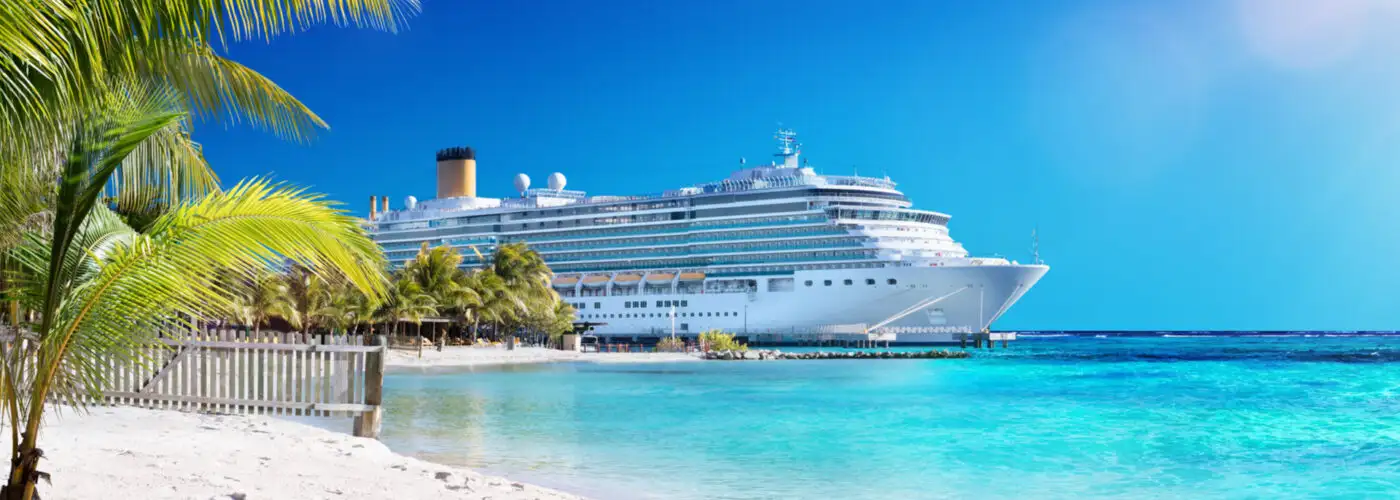
Cruise Passport Requirements: Do I Need a Passport to Go on a Cruise?
Kate H. Knapp
Travel Smarter! Sign up for our free newsletter.
Cruise passport requirements vary depending on the type of cruise you take as well as where the cruise will be sailing. Generally speaking, however, for most international cruises you’ll need either a passport book (valid beyond at least six months from departure date and containing at least two blank pages for entry stamps) or a passport card. The passport book is more expensive, but meets more of the cruise passport requirements for a larger set of destinations and circumstances, including air travel in case of an emergency.
Cruise Passport Requirements
If you’re not on a closed-loop cruise (a cruise that departs and returns from the same U.S. port), you’re required to travel with a passport that is valid at least six months beyond departure date and contains at least two blank pages for entry stamps.
If you’re taking a closed-loop cruise, you’re only required to travel with a birth certificate or a government-issued photo ID. But, it’s recommended that you travel with a passport card or passport book as well.
A passport card is more affordable than a passport book. And, because a passport card is less bulky (it’s similar in size to a driver’s license), it’s easier to carry more securely than a passport book. However, a passport card is only valid for land and sea border crossings between the U.S., Canada, Mexico, Bermuda, and the Caribbean. A passport book may be required in foreign ports on your itinerary and is mandatory for international flights (in case of an emergency). Therefore, a valid passport book is the most recommended and dependable form of identification in all cases of cruise travel.
How to Get a Passport for a Cruise
Apply for a passport as soon as you know you’ll be taking an international cruise. The cost will be greater if you apply for a passport within three weeks of travel time and need an expedited application. You can learn more about the requirements and documents needed to obtain a U.S. passport at USA.gov .
So, Do I Need a Passport to Go on a Cruise?
In summary: If your cruise itinerary takes you outside of the U.S., then yes, you will need a passport to take a cruise. However, depending on your itinerary, you may only need a passport card instead of a full passport book that is valid beyond six weeks from your departure date and contains at least two blank pages for entry stamps. In case of an emergency, however, the passport book is recommended as the passport card will not work for air travel.
Helpful Resources When Taking a Cruise
The U.S. Department of State provides smooth sailing with a handy Traveler’s Checklist of things to do for your next cruise, as well as passport recommendations and requirements.
Protect Your Passport
We recommend investing in a passport cover or wallet to protect your pages from bends, tears and spills. It’s important to keep your passport in good condition for easy inspection.
On travel days, only take your passport out during inspection. Otherwise, keep it stowed away in a dedicated section of your bag (if you keep it in the same place every time, you won’t ever scramble to locate it). Once onboard, find a way to stow it securely. In-room safes or safe deposit boxes at the concierge front desk are generally good options, but if neither is available, you’ll need to decide how to keep your passport secure. You might consider keeping it in an under-clothing money belt that you wear, or leaving it in the room but locking it in your suitcase with a TSA-approved lock .
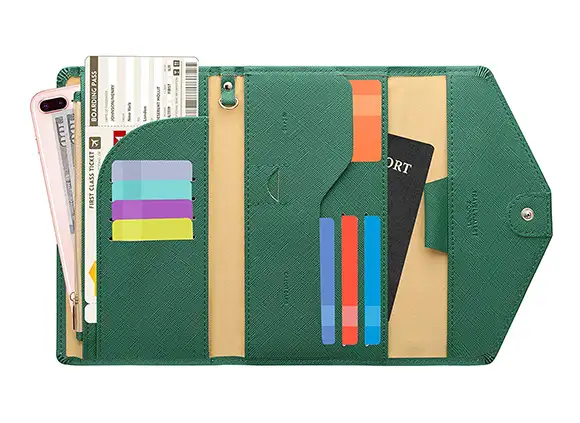
More from SmarterTravel:
- 5 Exotic Places Where You Don’t Need a Passport
- How to Renew a Passport, Global Entry, and TSA PreCheck—The Ultimate Guide
- How to Take Your Own Passport Photo
Editor’s note: This story was originally published in 2016. It has been updated to reflect the most current information.
We hand-pick everything we recommend and select items through testing and reviews. Some products are sent to us free of charge with no incentive to offer a favorable review. We offer our unbiased opinions and do not accept compensation to review products. All items are in stock and prices are accurate at the time of publication. If you buy something through our links, we may earn a commission.
Top Fares From

Don't see a fare you like? View all flight deals from your city.
Today's top travel deals.
Brought to you by ShermansTravel
Southwest Ireland: 8-Night Trip, Incl. Guinness...
Specialized Travel Services

Luxe, 7-Night Caribbean & Mexico Cruise...
Regent Seven Seas Cruises

Ohio: Daily Car Rentals from Cincinnati

Trending on SmarterTravel
- Search Please fill out this field.
- Manage Your Subscription
- Give a Gift Subscription
- Newsletters
- Sweepstakes
- Travel Tips
- Customs + Immigration
The Difference Between Passport Books and Passport Cards — and Why It Matters
What to know about these key travel documents.
:max_bytes(150000):strip_icc():format(webp)/Stefanie-Waldek-7eed18a8c9734cb28c5d887eb583f816.jpg)
belterz/Getty Images
Traveling abroad requires proper documentation, and that usually means a passport — the classic, pocket-sized book with your photo and empty pages for visa stamps. But did you know that another type of passport is available in the United States? It's called a passport card. While passport cards have their limitations, they are often cheaper and easier to get than a passport book. Here's everything you need to know about the differences between passport books and passport cards — and how to decide which one is right for you.
Related: How to Get a Passport as Quickly as Possible
What Is a Passport Book?
yenwen/Getty Images
When you think of a passport, you probably picture a passport book. This book is the gold standard for international travel documentation, issued by your home country's government. In the U.S., passport books are navy blue, and they count as a Real ID, or form of federally accepted identification. Your photo and personal information, including your birthday, birthplace, and gender, are in the front of the book, as is your passport number, its date of issue, and its expiration date (they're valid for 10 years). Behind this are blank pages for visas, which are often stamps or stickers that you'll receive at a country's border control.
What Is a Passport Card?
Courtesy U.S. State Department
In the U.S., a passport card is a Real ID–compliant form of identification that allows you to travel to certain international destinations, and by certain means of transportation only. Namely, a passport card is typically used for land crossings into Canada and Mexico, though it also grants access to Caribbean countries and Bermuda by land and by sea. A passport card looks similar to a driver's license, with your photo and personal details listed on the front. And it's small enough to fit in your wallet. Like a passport book, a passport card is valid for 10 years.
Differences Between a Passport Book and a Passport Card
While passport books and passport cards are both government-issued forms of ID that allow you to travel internationally, they have significant differences. The most important difference is that passport books are accepted for all forms of international travel to all international destinations, whereas passport cards are only acceptable for land and sea transportation to Canada, Mexico, Caribbean countries, and Bermuda. That means if you're flying internationally, no matter the destination, you need a passport book.
They also differ in price . Passport books have first-time application and renewal fee of $130, but passport cards have a first-time application and renewal fee of $30. Both services also have a $35 processing fee. And, of course, they differ in size and appearance, with passport books being pocket-sized books and passport cards being the size of a standard ID that can fit in your wallet.
Related: How to Expedite Your Passport After Applying
Should I get a Passport Book or a Passport Card?
Passport books are mandatory for most forms of international travel — you'll definitely need one if you plan to fly internationally (and perhaps you'll want a great passport wallet to keep it in). Passport cards, on the other hand, are generally better for people who need to drive into Canada or Mexico regularly, or who plan to sail from the U.S. Caribbean or Bermuda. Passport cards are also ideal for people flying domestically who do have a passport but don't have a driver's license, as passport cards are Real ID–compliant and are therefore valid for domestic travel.
Can I Get Both a Passport Book and Passport Card?
You can have both a passport book and a passport card at the same time. In fact, if you already have a passport book, your passport card's processing fee will be waived. If you do not have a driver's license, a passport card may be a good option to use as a Real ID for domestic flights. Just remember that you can't use passport cards for international flights.
How to Get Passport Books and Passport Cards
Getting a passport book or a passport card requires the same process. You can even use the same application paperwork for both, and you simply check off which document you want, or select both. First-time applicants will need to visit a passport office in person to complete the process. For renewals , you can apply by mail. Applicants must provide proof of their U.S. citizenship during the process (originals or certified copies are required), a second form of eligible ID, and a passport photo that meets strict criteria. Right now, passport books and cards can take nearly four months to receive, so make sure you apply well in advance of any international travel, though there are ways to get your passport faster if necessary.
Related Articles
You are using an outdated browser. Please upgrade your browser to improve your experience.
Passports, Visas & Citizenship Documentation
Passport Benefits Alaska The Bahamas, Caribbean, Pacific Coast, Bermuda or Canada – Round Trip Cruises Caribbean or The Bahamas – One-Way Cruises Disney Magic at Sea – Australia to Australia (Excluding those with a stop in New Caledonia) Disney Magic at Sea – Australia to Australia (Includes Stop in New Caledonia) Disney Magic at Sea – Australia to New Zealand Disney Magic at Sea – New Zealand to Australia Disney Magic at Sea – New Zealand to New Zealand Europe Pacific Coast, Canada or Sailings Between Hawaii and Vancouver – One Way Cruises Panama Canal Transatlantic Crossing South Pacific Repositioning Sailings – Honolulu to Sydney South Pacific Repositioning Sailings – Sydney to Honolulu
Passport Benefits
Learn about the perks of having a passport when you travel with Disney Cruise Line.
Sailing from: Vancouver
The following guidelines are based on government regulations, which are subject to change at any time. It is your responsibility to ensure that you have all the proper documentation to board the ship and enter each of the countries on your cruise itinerary.
Travelers can visit the US State Department's website for more information. All documents must be valid for the entire length of the voyage, unless otherwise noted. Guests without proper documentation will be denied boarding . When dropping off luggage upon arrival, please keep all documents in your possession to present during check-in at the terminal.
Adults traveling with minors for whom they are not the parent or legal guardian must present a completed Minor Authorization Form signed by the child’s parent(s) or legal guardian, authorizing the adult permission to take the child on the specific cruise, supervise them and allow emergency medical treatment to be administered if necessary.
US Citizens (Including Children) Traveling to or Returning from Canada (Vancouver) by Air
- Original valid US Passport
US Citizens 16 years of Age and Older Traveling to Canada (Vancouver) by Land or Sea
- Original valid US passport OR
- Original valid US passport card OR
- Original valid Trusted Traveler card (NEXUS, FAST)
US Citizens 15 years of Age and Younger Traveling to Canada (Vancouver) by Land or Sea
- Puerto Rico birth certificates issued prior to July 1, 2010, are not acceptable.
- Hospital-issued birth certificates are not acceptable
Children 15 years of age and younger are required to present one of the documents listed above, but do not need to present a government-issued photo ID.
Social Security and Global Entry cards are not acceptable proof of US citizenship for purposes of traveling outside of the US.
US Legal Permanent Residents
Guests who are legal permanent residents of the US must present a valid original passport and a Permanent Resident Card to travel outside the US. Photocopies are not acceptable. If traveling by air to Canada, US permanent residents must obtain an electronic travel authorization (eTA). Learn more about Canadian visa requirements and exceptions.
Canadian Citizens (Including Children)
- Original valid Canadian passport OR
Canadian permanent residents must present a valid passport and a Permanent Resident Card (PRC) to travel outside Canada.
Canadian Citizens 15 years of age or younger may sail with either an original valid Canadian passport or a Canadian birth certificate.
Citizens of All Other Countries (Including Children)
- Original valid passport
This cruise calls at ports in Canada and the United States; therefore, Guests may be required to obtain a multi-entry visa for both Canada and/or the United States.
It is the Guest's responsibility to identify and obtain all necessary visas before commencing their cruise.
Learn more about Canadian visa requirements and exceptions.
If your country participates in the Visa Waiver Program (VWP), you are required to have a valid machine-readable passport and obtain 72-hour advance travel authorization via the Electronic System for Travel Authorization (ESTA) prior to boarding carriers by air or sea to the US under the Visa Waiver Program. A copy of the approved ESTA application should be brought with you when traveling. View a list of applicable countries and registration requirements .
The Bahamas, Caribbean, Pacific Coast, Bermuda or Canada – Round Trip Cruises
Sailing from/to: port canaveral, fort lauderdale, galveston, san diego and san juan..
Travelers can visit the US State Department's website for more information. All documents must be valid for the entire length of the voyage, unless otherwise noted. Guests without proper documentation will be denied boarding. When dropping off luggage upon arrival, please keep all documents in your possession to present during check-in at the terminal.
US Citizens (Including Children)
- Original valid Trusted Traveler Card (NEXUS, FAST)
- Hospital-issued birth certificates are not acceptable.
- Original Consular Report of Birth Abroad (CRBA) issued by the Department of State AND a physical government-issued photo ID (digital/mobile state-issued IDs are not acceptable to sail)
- Original Certificate of Naturalization issued by US Citizenship and Immigration Services AND a physical government-issued photo ID (digital/mobile state-issued IDs are not acceptable to sail)
Social Security Cards and Global Entry are not acceptable proof of US citizenship for purposes of traveling outside of the US.
Guests who are legal permanent residents of the US must present a valid original Permanent Resident Card. Photocopies are not acceptable.
Many countries require an entry visa based on your nationality. It is the Guest's responsibility to identify and obtain all necessary visas before commencing their cruise.
Guests should be prepared to present a copy of their I-94 arrival record upon request. A digital copy of this record can be obtained at the US Customs and Border Protection website.
Caribbean or The Bahamas – One-Way Cruises
Sailing from: galveston to san juan, san juan to galveston, fort lauderdale to san juan, san juan to fort lauderdale.
Travelers can visit the US State Department's website for more information. All documents must be valid for the entire length of the voyage, unless otherwise noted. Guests without proper documentation will be denied boarding. When dropping off luggage upon arrival, please keep all documents in your possession to present during check-in at the terminal.
Guests who are legal permanent residents of the US must present a valid original Permanent Resident Card (PRC). Photocopies are not acceptable.
Guests should be prepared to present a copy of their I-94 arrival record upon request. A digital copy of this record can be obtained at the US Customs and Border Protection website .
Disney Magic at Sea – Australia to Australia (Excluding those with a stop in New Caledonia)
All guests ages 18 years and older.
- Original passport, valid at least 6 months after sailing has ended OR
- Government-issued photo ID
All Guests Ages 17 Years and Younger
- Original valid passport, valid at least 6 months after sailing has ended OR
- Government-issued ID OR
- Original or copy of government-issued birth certificate
All Non-Australian Nationalities, Including Children
- Subclass 601 Electronic Travel Authority
- Subclass 651 eVisitor
Disney Magic at Sea – Australia to Australia (Includes Stop in New Caledonia)
Required documents for all nationalities:.
- Original valid passport, valid at least 6 months after sailing has ended
- Information regarding French visas (New Caledonia is a territory of France) can be found on the official visa website for France .
Because requirements may vary, we recommend that Guests contact their travel agent, government agency, embassy or consulate for more information on required travel documentation for the port of embarkation and all ports of call during the cruise.
Disney Magic at Sea – Australia to New Zealand
- Note: Australian permanent residents must apply for NZeTA.
- Information regarding New Zealand visas and NZeTA can be found by going to the official visa website for New Zealand.
Disney Magic at Sea – New Zealand to Australia
Required documents for all nationalities, disney magic at sea – new zealand to new zealand, all non-new zealand nationalities, including children.
- Information regarding New Zealand NZeTA or visa requirements can be found on the official visa website for New Zealand.
All Nationalities (Including Children)
Round-trip cruises from/to barcelona and civitavecchia and one-way cruises from barcelona to civitavecchia, civitavecchia to barcelona.
- Original valid passport, valid at least 6 months after the sailing has ended
These cruises call at ports in Europe. In addition to a valid passport, you may be required to obtain multiple-entry visas for Europe ( Schengen visa ) based on your nationality. It is the Guest's responsibility to identify and obtain all necessary visas before commencing their cruise.
Round-Trip Cruises from/to Southampton and One-Way Cruises from Barcelona to Southampton.
These cruises call at ports in Europe and/or the United Kingdom. In addition to a valid passport, you may be required to obtain multiple-entry visas for Europe ( Schengen visa ) and also the United Kingdom based on your nationality. It is the Guest's responsibility to identify and obtain all necessary visas before commencing their cruise.
British Isles Cruises from Southampton
- Original valid Passport, valid at least 6 months after the sailing has ended
This cruise calls at ports in Ireland and the United Kingdom. In addition to a valid passport, you may be required to obtain a multiple-entry visa for Ireland, and/or the United Kingdom based on your nationality. It is the Guest's responsibility to identify and obtain all necessary visas before commencing their cruise.
Pacific Coast, Canada or Sailings Between Hawaii and Vancouver – One Way Cruises
Us citizens (including children) traveling to or returning from canada by air.
- Original valid US passport
US Citizens (Including Children) Traveling to or Returning from Canada by Land or Sea
- Original Permanent Resident Card (photocopies are not acceptable) AND
- Original valid Trusted Traveler card (NEXUS, FAST) OR
- Canadian permanent residents must travel with a valid passport and their Permanent Resident Card (PRC) to travel outside of Canada
If your country participates in the Visa Waiver Program (VWP), you are required to have a valid machine-readable passport and obtain 72-hour advance travel authorization via the Electronic System for Travel Authorization (ESTA) prior to boarding carriers by air or sea to the US under the Visa Waiver Program. A copy of the approved ESTA application should be brought with you when traveling. View a list of applicable countries and registration requirements . Guests should be prepared to present a copy of their I-94 arrival record upon request. A digital copy of this record can be obtained at the US Customs and Border Protection website.
Panama Canal
- Original valid US passport, valid at least 6 months after the sailing has ended
- Original Permanent Resident Card (PRC) AND
Citizens of All Countries (Including Children)
Transatlantic Crossing
Fort lauderdale to barcelona.
The following guidelines are based on government regulations, which are subject to change at any time. It is your responsibility to ensure that you have all the proper documentation to board the ship and enter each of the countries on the ship's itinerary.
Travelers can visit the US State Department's website for more information. All documents must be valid for the entire length of the voyage, unless otherwise noted. Guests without proper documentation will be denied boarding. When dropping off luggage upon arrival please keep all documents in possession to present during check-in at the terminal.
This cruise calls at ports in Europe. In addition to a valid passport, you may be required to obtain multiple-entry visas for Europe ( Schengen visa ) based on your nationality. It is the Guest's responsibility to identify and obtain all necessary visas before commencing their cruise.
Southampton to Fort Lauderdale
- Original Permanent Resident Card AND
The ship docks at ports in Europe and disembarks in the United States. In addition to a valid passport, you may be required to obtain multiple-entry visas for Europe ( Schengen visa ) and/or United States based on your nationality. It is the Guest's responsibility to identify and obtain all necessary visas before commencing their cruise.
If your country participates in the Visa Waiver Program (VWP), you are required to have a valid machine-readable passport and obtain 72-hour advance travel authorization via the Electronic System for Travel Authorization (ESTA) prior to boarding carriers by air or sea to the US under the Visa Waiver Program. A copy of the approved ESTA application should be brought with you when traveling.
View a list of applicable countries and registration requirements .
South Pacific Repositioning Sailings – Honolulu to Sydney
- Information regarding Fiji visas can be found on the official immigration website for Fiji .
South Pacific Repositioning Sailings – Sydney to Honolulu
- Because this cruise disembarks in the United States, some Guests may be required to obtain a multi-entry visa for the United States.
If your country participates in the Visa Waiver Program (VWP), it is required to have a valid machine-readable passport and obtain 72-hour advance travel authorization via the Electronic System for Travel Authorization (ESTA) prior to boarding carriers by air or sea to the US under the Visa Waiver Program. A copy of the approved ESTA application should be brought with you when traveling.
Guests who are legal permanent residents of the US must present a valid original passport and a Permanent Resident Card (PRC) to travel outside the US. Photocopies are not acceptable.
- Social Security and Global Entry cards are not acceptable proof of US citizenship for purposes of traveling outside of the US
- Credit cards
- View all credit cards
- Banking guide
- Loans guide
- Insurance guide
- Personal finance
- View all personal finance
- Small business
- Small business guide
- View all taxes
You’re our first priority. Every time.
We believe everyone should be able to make financial decisions with confidence. And while our site doesn’t feature every company or financial product available on the market, we’re proud that the guidance we offer, the information we provide and the tools we create are objective, independent, straightforward — and free.
So how do we make money? Our partners compensate us. This may influence which products we review and write about (and where those products appear on the site), but it in no way affects our recommendations or advice, which are grounded in thousands of hours of research. Our partners cannot pay us to guarantee favorable reviews of their products or services. Here is a list of our partners .
Passport Book vs. Card: 4 Key Differences
Many or all of the products featured here are from our partners who compensate us. This influences which products we write about and where and how the product appears on a page. However, this does not influence our evaluations. Our opinions are our own. Here is a list of our partners and here's how we make money .
Table of Contents
About the passport book
About the passport card, how a passport book and passport card differ, when to get both, if you're choosing between the passport card and passport book.
For international travel, the U.S. Department of State issues two types of official government documents: the passport book and the passport card.
The main difference between a passport card and book boils down to where you can use them, what methods of transit are eligible and the cost.
It’s important to learn the difference between the two so you can choose more confidently if one (or both) are right for you.
A passport book is a small booklet available to U.S. citizens and non-citizen nationals that can be used for international travel by air, sea or land. For travelers age 16 or older at the date of issue, the books are valid for 10 years. Younger travelers are given passports that are valid for five years.
Each passport book is assigned a unique number. The first page of a passport contains your photo and personal information, including your full name, nationality, date of birth, place of birth, sex, the passport issue date and passport expiration date. The rest of the book is filled with blank pages for immigration stamps and visas. Depending on the country you’re visiting, you might be required to have two to four blank visa pages.
The standard passport book is 28 pages; however, you can request a 52-page book if you anticipate frequent international travel.
Since 2007, only electronic passports have been issued. These books contain an electronic chip that stores the information on the first page, a biometric identifier of your passport photo, a chip identification number and a digital signature.
» Learn more: The best travel credit cards right now
The passport card is also available to U.S. citizens and non-citizen nationals, but can only be used for foreign border entry by land and sea — and only in specific places. Regardless of the country you’re visiting, it’s not an accepted form of ID for international air travel. Passport cards are valid for the same durations as passport books.
The passport card fits a standard wallet card slot and contains your photo, full name, nationality, date of birth, place of birth, issue and expiration dates, plus your unique passport card number.
The card also has built-in Radio Frequency Identification which can be used in Ready Lanes at Canadian and Mexican land borders for faster entry.
» Learn more: How to save on road trips
1. Border entry method
The biggest difference between a passport book and passport card is the methods of travel that are eligible. While passport books can be used for all entry methods into an international country — whether air, land or sea — passport cards are limited to travel through land and sea borders only.
» Learn more: TSA PreCheck vs. Global Entry: Which is right for you?
2. Travel destination
Another difference between a passport book and passport card is which countries each can be used to enter.
There are no limitations for destinations where you can use your passport book. Passport cards, however, can only be used going through a land border or seaport in Canada, Mexico, the Caribbean and Bermuda. For example, if you’re planning a Mediterranean cruise, you’ll need to use a passport book. The card isn’t valid for seaport entry in Europe.
» Learn more: The complete guide to a U.S.-Canada border crossing
3. Format and size
Passport books and passport cards have physical differences. Passport books are 3.5-by-5-inch booklets with blank pages for foreign immigration stamps and visas. Although they’re pocket-sized, passport books are bulkier than passport cards, which are the size of a credit card or driver’s license.
» Learn more: How to get your first passport
Passport books are more expensive than cards. Regardless of document type, all first-time applicants must pay a $35 acceptance fee, which is included in the price.
Passport books for first-time applicants cost:
For adults (16 and older): $165.
For children (15 and under): $135.
The cost difference is stark compared to passport cards for first-time applicants:
For adults (16 and older): $65.
For children (15 and under): $50.
Acceptance fees are dropped for renewals of both the passport book and card. Travelers can expect to pay $130 to renew an adult passport book and $30 to renew an adult passport card.
The passport book is the all-encompassing identifier to carry regardless of how and where you’re traveling. You have the option to purchase a passport book and card in one application, and there are a couple of scenarios when having both passport types might be convenient, like:
If you travel equally by air and land. If you’re visiting Canada or Mexico by car, you might prefer a more compact document for traveling across the border. In that case, having a passport card for regular land-based trips would be useful. You can keep your passport book handy for international air travel.
If you don’t have a Real ID , which will be required for domestic air travel beginning in 2025. A U.S. passport — book or card — is accepted as an alternative to the Real ID, but the card is more convenient to carry around. If you’re flying domestically without a Real ID, you'll be able to use a passport card for air travel within the 50 states and reserve your passport book for international travel.
If you choose to apply for both passport options in one application rather than applying for them separately, you’ll save $35 since you’ll only pay one acceptance fee.
» Learn more: What flyers need to know about REAL ID for travel this fall and beyond
Deciding between a passport book and a passport card can feel like a difficult choice considering the cost difference and the turnaround time to get your passport application processed.
When choosing which option is best for you, consider the type of travel you’re most likely to do over the next few years. If you’re unsure about your future travel needs, a passport book might be your best option.
How to maximize your rewards
You want a travel credit card that prioritizes what’s important to you. Here are some of the best travel credit cards of 2024 :
Flexibility, point transfers and a large bonus: Chase Sapphire Preferred® Card
No annual fee: Bank of America® Travel Rewards credit card
Flat-rate travel rewards: Capital One Venture Rewards Credit Card
Bonus travel rewards and high-end perks: Chase Sapphire Reserve®
Luxury perks: The Platinum Card® from American Express
Business travelers: Ink Business Preferred® Credit Card

on Chase's website
1x-5x 5x on travel purchased through Chase Travel℠, 3x on dining, select streaming services and online groceries, 2x on all other travel purchases, 1x on all other purchases.
75,000 Earn 75,000 bonus points after you spend $4,000 on purchases in the first 3 months from account opening. That's over $900 when you redeem through Chase Travel℠.

1.5%-5% Enjoy 5% cash back on travel purchased through Chase Travel, 3% cash back on drugstore purchases and dining at restaurants, including takeout and eligible delivery service, and unlimited 1.5% cash back on all other purchases.
Up to $300 Earn an additional 1.5% cash back on everything you buy (on up to $20,000 spent in the first year) - worth up to $300 cash back!

on Capital One's website
2x-5x Earn unlimited 2X miles on every purchase, every day. Earn 5X miles on hotels and rental cars booked through Capital One Travel, where you'll get Capital One's best prices on thousands of trip options.
75,000 Enjoy a one-time bonus of 75,000 miles once you spend $4,000 on purchases within 3 months from account opening, equal to $750 in travel.

What's the difference between a passport book and passport card?

Editor's Note
If you've ever applied for or renewed a U.S. passport , you may have noticed the option to purchase both a passport book and a passport card.
Although both serve as proof of your U.S. citizenship and identity, they are used for different travel purposes.
Here's all you need to know about the differences between a passport book and a passport card, as well as which one you should get.
What is a passport book?
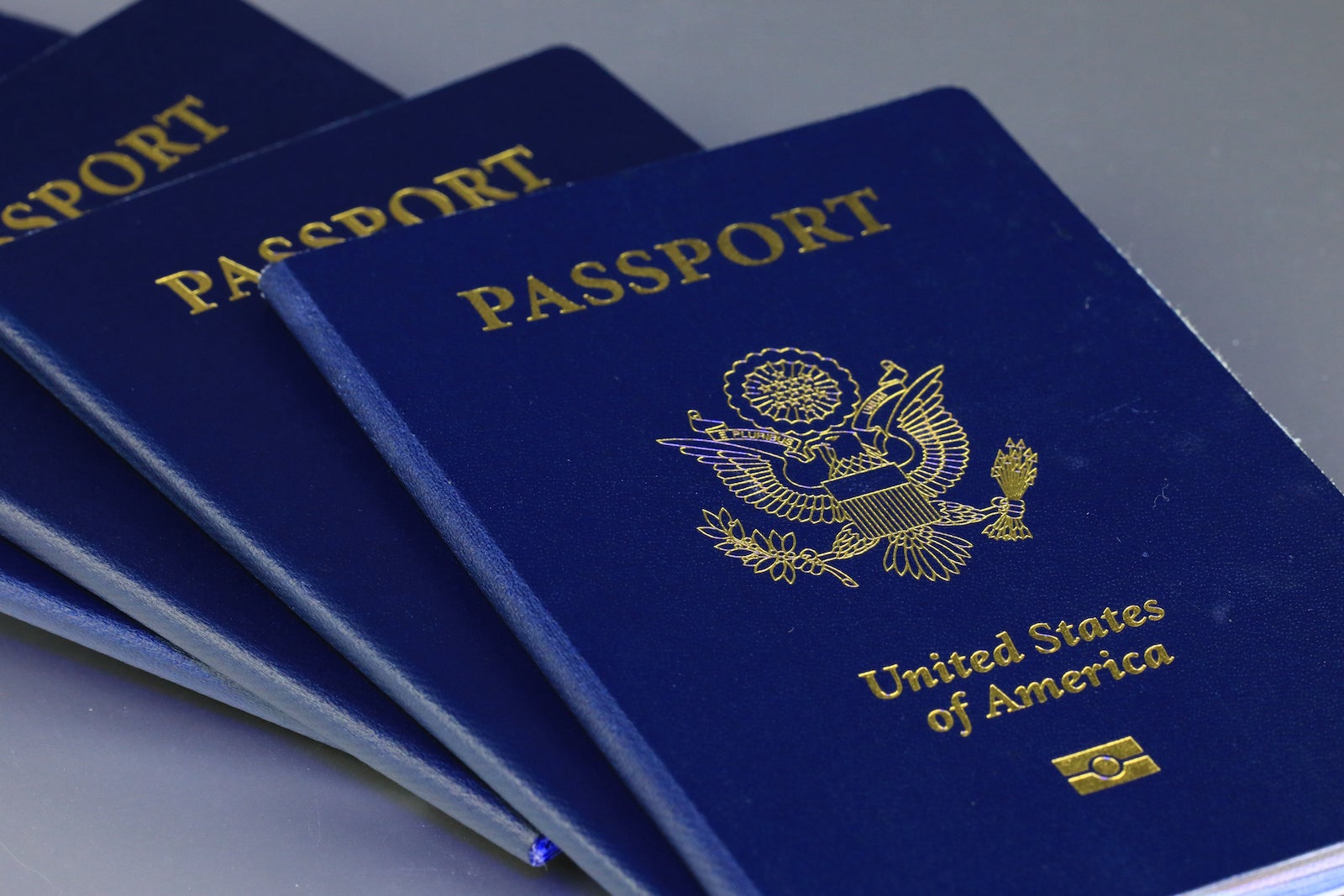
A passport book is likely the document travelers are most familiar with, as it's used for international travel to and from the U.S., including by air, sea or land.
All U.S. citizens and non-citizen nationals are eligible for a U.S. passport book.
Passport books contain identifying details, including your full name, nationality, date and place of birth, sex, place of issuance, birthplace, issuance and expiration dates, and an alphanumeric eight-digit passport number.
Biometric passport books come in the form of a booklet with a navy blue cover containing 28 pages, where border agents stamp each time you cross into a new country. Should you ever receive a visa to enter a country, that information will also be documented on those pages.
For travelers aged 16 or older at the date of issue, passport books are valid for 10 years. Otherwise, they're valid for five years , and these travelers must renew their passports at that time.
What is a passport card?
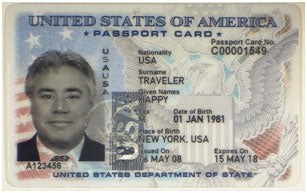
Unlike passport books, a passport card is wallet-sized, similar to the size of a driver's license. Passport cards can be used for land and sea entry to the U.S. from Canada , Mexico , Bermuda and the Caribbean .
These contain almost identical information as passport books, specifically your full name, nationality, date/place of birth, sex, issue and expiration dates, plus a unique passport card number.
All U.S. citizens and non-citizen nationals are eligible for a U.S. passport card.
Unlike passport books, a passport card can be used in Ready Lanes in Canada and Mexico, which provide expedited vehicle and pedestrian border entry for approved users by U.S. Customs and Border Protection.
Like passport books, passport cards are also valid for 10 years for travelers aged 16 and older, and five years for those under age 16 at the time of issuance.
Differences between the passport book and passport card
The passport book is larger than a passport card, measuring 5 inches by 3.5 inches when closed. The passport card is the size of a standard credit card.
Overall, obtaining a U.S. passport book is much more expensive, at $165 for first-time applicants aged 16 and older, $135 for those under 16 and $130 for those who renew their passport book by mail, regardless of age.
It only costs first-time applicants aged 16 and older $65 to get a passport card, while it's $50 for younger applicants. Passport cards are renewable by mail for just $30.
Both serve as acceptable alternatives to a state-issued ID (driver's license) for U.S. citizenship identification for travel and other purposes. However, only passport books are valid for international air travel.
Can I have both a passport book and a card?
You can apply for both a passport book and passport card at the same time, either in person using Form DS-11 or via mail using Form DS-82 , simply by checking the appropriate box at the top of the form indicating that you would like to apply for both products. You cannot renew one without the other.
If you have a passport book and are eligible for mail renewal, you can also apply for a passport card renewal via mail, even if it is your first passport card.
For eligibility rules regarding mail renewal, see here .
Which should I get?
You can technically obtain both documents. However, it doesn't make sense to pay for both when a U.S. passport book grants international air, land and sea access to the U.S. from all destinations the passport card does.
Having said that, you may want to consider also applying for a passport card if you frequently travel both by air and land, as a passport card is a smaller document to travel with and potentially more convenient than carrying a traditional passport book.
Either way, both a passport book and card are accepted as forms of Real ID . As a reminder, Real-ID-compliant driver's licenses will be required to pass through TSA security lines at airports for all travelers aged 18 and older starting May 7, 2025 .
Bottom line
Passport books and passport cards serve different purposes. Passport books are required as identification verification for international air travel. Passport cards serve that purpose but can only be used for land travel into the U.S. from specific destinations.
Travelers can apply for one or both documents, as they both are acceptable as U.S. citizenship identification.
- Favorites & Watchlist Find a Cruise Cruise Deals Cruise Ships Destinations Manage My Cruise FAQ Perfect Day at CocoCay Weekend Cruises Crown & Anchor Society Cruising Guides Gift Cards Contact Us Royal Caribbean Group
- Back to Main Menu
- Search Cruises " id="rciHeaderSideNavSubmenu-2-1" class="headerSidenav__link" href="/cruises" target="_self"> Search Cruises
- Cruise Deals
- Weekend Cruises
- Last Minute Cruises
- Family Cruises
- 2024-2025 Cruises
- All Cruise Ships " id="rciHeaderSideNavSubmenu-4-1" class="headerSidenav__link" href="/cruise-ships" target="_self"> All Cruise Ships
- Cruise Dining
- Onboard Activities
- Cruise Rooms
- The Cruise Experience
- All Cruise Destinations " id="rciHeaderSideNavSubmenu-5-1" class="headerSidenav__link" href="/cruise-destinations" target="_self"> All Cruise Destinations
- Cruise Ports
- Shore Excursions
- Perfect Day at CocoCay
- Caribbean Cruises
- Bahamas Cruises
- Alaska Cruises
- European Cruises
- Mediterranean Cruises
- Royal Destinations
- Cruise Planner
- Make a Payment
- Check-In for My Cruise
- Beverage Packages
- Shore Excursions
- Update Guest Information
- Book a Flight
- Dining Packages
- Royal Gifts
- Required Travel Documents
- Transportation
- Book a Hotel
- Redeem Cruise Credit
- All FAQs " id="rciHeaderSideNavSubmenu-7-1" class="headerSidenav__link" href="/faq" target="_self"> All FAQs
- Boarding Requirements
- Future Cruise Credit
- Travel Documents
- Check-in & Boarding Pass
- Transportation
- Perfect Day at CocoCay
- Post-Cruise Inquiries
- Royal Caribbean
- Celebrity Cruises
Questions related to Boarding Requirements
Still need help contact us, get support by phone or email.
Email Your Questions
Locate a Travel Agent
Previewing: Promo Dashboard Campaigns
My Personas
Code: ∅.

Where can I cruise without a passport?
MSN has partnered with The Points Guy for our coverage of credit card products. MSN and The Points Guy may receive a commission from card issuers.
You know it’s best to cruise with a passport, but there are dozens of reasons why you might consider taking a cruise without one.
What if an opportunity pops up on short notice, and you don’t have a passport yet? Or if you forgot to renew yours when it expired? What if it’s only a three-night cruise to The Bahamas, and the passport application fee is almost as much as the cruise fare? Or maybe you have children nearing age 16 and can’t see the point in getting them passports now that are only valid for five years.
Luckily, you have options. Thanks to an international agreement called the Western Hemisphere Travel Initiative , U.S. citizens can cruise on certain itineraries within North American countries using government-issued identification (like a valid driver’s license) and proof of citizenship (like a birth certificate, also government-issued).
The applicable itineraries are round-trip or closed-loop sailings from U.S. ports. One-way sailings from one U.S. port to another that visit a foreign country, or from a U.S. port to a foreign one, would require a passport.
For more cruise news, reviews and tips, sign up for TPG’s cruise newsletter .
Before we go further, let’s clarify that when we talk about passports, we mean the passport book. Passport cards , which were created because of the WHTI, serve as a low-cost alternative to providing a driver’s license and birth certificate for cruising in all the places we are about to discuss.
Got it? Let’s look at the options for where you can cruise without a passport.
Cruising to Alaska is one of the easiest ways to experience all the state offers. You’ll have opportunities to see glaciers and wildlife, stroll the streets of charming coastal towns, eat your fill of local crab legs and salmon or get out in nature on a kayak, zip line or hike.
If you’re interested in cruising to Alaska without a passport, look for itineraries that begin (and end) in Seattle , San Francisco or southern California ports such as Los Angeles or Long Beach. The most common length for these closed-loop Alaska cruises operated by the major cruise lines is seven nights. Cruises early or late in the season may be only four or five nights, and trips departing from Los Angeles are usually 14 nights.
What if you really want to cruise one way from Canada to Alaska (or vice versa)? Although Canada prefers U.S. citizens who arrive by sea or land to have a passport book, it is not required if they have proper identification and proof of citizenship. The U.S., however, requires one of the following WHTI-approved forms of identification for entries by land or sea: passport card, enhanced driver’s license, I-872 American Indian card or trusted traveler program IDs like Nexus, SENTRI and FAST.
Technically, if you have one of those forms of ID, but not a passport book, you can take a one-way Alaska cruise, as long as you don’t have to fly to or from Canada.
More complications arise for non-passport holders who book shore excursions that involve crossing from Alaska to Canada. White Pass and Yukon Route train rides are good examples. WP&YR allows cruise passengers to go on the 3-hour train excursion without a passport, but not to take any of the longer routes. That’s their policy, not a legal requirement.
All of this means that Alaska cruises are one instance when the passport card would be a handy alternative to traveling with both an ID card and a birth certificate. It opens up one-way itineraries.
Related: The best Alaska cruise for every type of traveler
A cruise to the Caribbean transports you to tropical islands bathed in turquoise waters. Whether you seek warm beaches, cool drinks, water sports or cultural education, you can find a Caribbean cruise to fit the bill.
It’s easy to cruise without a passport in the Caribbean. Just book one of the many closed-loop, round-trip sailings departing from a U.S. port. Most major cruise lines offer sailings that range between three and 15 nights from ports such as Galveston, Texas; New Orleans, Louisiana; multiple ports in Florida (including Miami and Fort Lauderdale); plus Charleston, South Carolina; Baltimore; Bayonne, New Jersey; and New York City.
Most Caribbean islands participate in the WHTI, but it’s always best to check the details specific to the ports of call included in your itinerary. Don’t forget that islands such as Puerto Rico, St. Thomas, St. John and St. Croix are U.S. territories; visits there never require a passport for U.S. citizens.
Related: The best Caribbean cruises for every type of traveler
Bermuda is a British Overseas Territory, lying 643 miles off the coast of North Carolina. Hop a cruise ship for a direct route to the island’s famous beaches and golf courses. Spring and summer are the prime seasons to visit, but cruises are possible throughout the year.
Cruising without a passport to Bermuda is also easy. Apart from a few isolated cruises stopping in Bermuda as they come or go from other destinations, there are no one-way Bermuda cruises to confuse the situation. If you plan to sail without a passport, be wary of any Bermuda cruise longer than 10 nights. Those are likely to be point-to-point cruises that happen to include Bermuda.
Passport-free cruises to Bermuda include ample five- to 10-night sailings from the East Coast ports of Baltimore, Bayonne, Boston and Manhattan. Occasional itineraries also pop up throughout the Bermuda season departing from Norfolk, Virginia; Charleston; and the Florida ports of Miami, Port Canaveral and Jacksonville.
Related: Does it make sense to take a short cruise to Bermuda?
Long known for delightful strands of beach and access to every imaginable form of water fun under the sub-tropical sun, the Bahamas are the destination of choice for easy and quick cruise vacations.
Skip the passport on three to five-night Bahamas cruises sailing round trip on most major cruise lines from the eastern Florida ports of Jacksonville, Port Canaveral, Fort Lauderdale and Miami.
A few longer (seven to 15 nights) itineraries stop in the Bahamas on their way into the Caribbean. Departures from Bayonne, Manhattan, Baltimore and Charleston will often get you weeklong Bahamas itineraries, as will sailings from Tampa, Galveston and New Orleans.
Related: Best Bahamas cruise tips for first-timers and repeat visitors alike
Our southern neighbor boasts two coastlines of cruise fun. Like most tropical cruise destinations, the top draws are the beaches and the ocean, but cruise ports in Mexico also give you access to ancient Mayan ruins, delicious cuisine and an abundance of land activities.
Mexico’s Caribbean and Pacific coasts are both accessible to cruisers who do not hold passports. If you want to visit Mexico’s eastern shores, you can find three- to 15-night cruises to Costa Maya, Cozumel and Progresso. Sailings depart Florida from Miami, Tampa, Fort Lauderdale and Port Canaveral; you can also find itineraries from New Orleans, Galveston and Mobile, Alabama.
Western Mexico, often referred to as the Mexican Riviera, includes the ports of Cabo San Lucas, Puerto Vallarta, Mazatlan and Ensenada, among others. Cruises depart San Diego for three- to five-night sailings on Disney and seven- to 10-night sailings on Holland America, Princess and Norwegian Cruise Line. Norwegian also sails from Los Angeles’ San Pedro port for three- to 10-night sailings — along with Royal Caribbean, Princess and Celebrity. Carnival sails similar routes from Long Beach.
Related: The best Mexico cruises for every type of traveler
From water sports to American history and Hawaiian culture, there’s a lot to experience on a Hawaii cruise . The best part may be the ability to hop from island to island, sampling the flavors of each as you go.
Closed-loop Hawaii cruises that don’t require passports come in two varieties. The short option is to fly to Honolulu and take a seven- or 10-night cruise on Norwegian Cruise Line ‘s Pride of America, which is the only large cruise ship allowed to operate entirely within the Hawaiian Islands without visiting a foreign port.
Small-ship cruise operator UnCruise Adventures also offers seven-night, inter-island Hawaiian sailings. The American-flagged ships only cruise to and from U.S. ports, so no passport is needed, as would be the case on any domestic trip.
The long-cruise option consists of 14- to 18-night round-trip sailings from San Diego, Los Angeles (Long Beach and San Pedro) and San Francisco. Cruise lines offering those cruises include Carnival, Princess and Holland America. You won’t need a passport for these closed-loop sailings, but you do need to be prepared for multiple days at sea as you cross the Pacific from California to Hawaii.
Beware of 20-plus-night cruises on Holland America, Princess and even Viking that are round-trip sailings from the West Coast and would seem to fit the bill for closed-loop cruises that don’t require passports. Most of these cruises don’t work because they also include stops in French Polynesia, which is outside of the WHTI agreement. Passports are required for the islands in the South Pacific, and thus for the entire cruise.
Related: The best Hawaii cruises for every type of traveler
Canada and New England
Cruises up North America’s East Coast allow you to take in historical sights of early Americana, stand atop rugged cliffs on the coast of Nova Scotia or revel in the French culture of Quebec.
Mainstream cruise lines operate a number of cruises along the U.S. and Canadian coast that don’t require passports. These depart from the ports of Bayonne, Baltimore, Boston, Manhattan and Brooklyn in New York City, and occasionally Norfolk. The majority of these New England and Canada cruises are weeklong, fall sailings, but a handful depart at other times of year or are a touch longer, at eight to 10 nights.
Cruise lines with Canada and New England closed-loop sailings include Norwegian, Royal Caribbean, Celebrity, Carnival, Princess, Holland America and small-ship operator American Cruise Lines.
Related: 12 best cruises to Canada and New England
These and other cruise lines also offer one-way cruises in both directions between Canada and New England. These itineraries, like Alaska cruises, may be possible without a passport book, as long as your plans don’t include flying into or out of Canada and your cruise line allows you to cruise with either a passport card or other acceptable form of identification and proof of citizenship.
We checked with a few lines for you. Princess, Holland America and Celebrity all strongly recommend passport books, but allow one of the WHTI forms of identification. Again, the passport card opens up the one-way possibilities assuming you aren’t flying and your cruise only includes Canada and the U.S.
Bottom line
While cruising with a passport is always recommended, it’s not required by law in certain circumstances. Closed-loop cruises from U.S. ports that visit Bermuda, Canada, the Caribbean and Mexico are part of an international agreement that allows U.S. citizens to cruise without a passport. In these cases, government-issued identification and proof of U.S. citizenship are acceptable alternatives to a passport book.
Passport cards are an affordable and unquestionable alternative to carrying an ID and birth certificate. If you want to go this route, know they are not valid for travel by air into or out of any foreign country, including Canada, Mexico, Bermuda or countries of the Caribbean — which is the primary reason most travel advisors urge cruisers to have a passport book.
As we’ve shown, you have plenty of options of where to cruise without a passport, and many travelers do so without incident. However, anything from engine trouble on your cruise ship to bad weather to an accident in port might necessitate a flight home from a foreign country, putting you in an awkward position if you don’t have a passport.
Plus, as much fun as simple round-trip cruises are, passports open up additional vacation possibilities in the form of longer, point-to-point and overseas trips. Don’t dismiss registering for a passport even as you consider where you can cruise without one.
Planning a cruise? Start with these stories:
- The 5 most desirable cabin locations on any cruise ship
- A beginners guide to picking a cruise line
- The 8 worst cabin locations on any cruise ship
- A quick guide to the most popular cruise lines
- 21 tips and tricks that will make your cruise go smoothly
- 15 ways cruisers waste money
- 12 best cruises for people who never want to grow up
- The ultimate guide to what to pack for a cruise
SPONSORED: With states reopening, enjoying a meal from a restaurant no longer just means curbside pickup.
And when you do spend on dining, you should use a credit card that will maximize your rewards and potentially even score special discounts. Thanks to temporary card bonuses and changes due to coronavirus, you may even be able to score a meal at your favorite restaurant for free.
These are the best credit cards for dining out, taking out, and ordering in to maximize every meal purchase.
Editorial Disclaimer: Opinions expressed here are the author’s alone, not those of any bank, credit card issuer, airlines or hotel chain, and have not been reviewed, approved or otherwise endorsed by any of these entities.


IMAGES
VIDEO
COMMENTS
New U.S. passport books cost $165 for adults and $145 for minors, while passport cards are only $65 for adults and $50 for minors in 2022. In other words, new passport cards cost less than half of ...
The card has the same validity period as a passport book: 10 years for an adult (age 16 and older); five years for minors (under 16 years of age). New passport card cost: $55 (age 16 and older) | $40 (minors under 16 years of age) Passport card renewal (by mail) cost: $30.
The passports for cruises FAQ page provides American citizens with answers to the most frequently asked questions about passport requirements related to cruising. ... Canada, the Caribbean, or Mexico must have a valid passport book or passport card. There is an exception for passengers of closed-loop cruises. If you board a cruise ship at a U.S ...
The passport card is for U.S. citizens who live in northern and southern border communities and cross the border by land. Use the passport book for international air travel. ALL / ALL / Can I use my passport card at Ready Lanes? Yes. You can save time at the U.S.-Mexico border by using Ready Lanes that read the U.S. passport card's Radio ...
You can use the passport card to reenter the United States at seaports of entry from Mexico, Canada, Bermuda, and the Caribbean. However, if you cannot return on the cruise ship for any reason, you will need a passport book to fly back to the United States. Unexpected circumstances that can make it important you have a passport book include:
For most cruises, you'll need a passport book that's valid for at least six months from the day your sailing ends. In some cases, you can use a passport card instead of a passport book, but that will only work if you plan to reenter the U.S. via your ship from Mexico, Canada, Bermuda or the Caribbean.
U.S. Customs and Border Protection states that if you're cruising without a passport, you'll need proof of identity and U.S. citizenship in the form of a state-issued birth certificate. It also requires a government-issued driver's license or photo ID with your name and date of birth.
The cost of a Card versus a Book is about half as expensive. According to the U.S. government travel website, those 16 years of age and up and applying for the first time, the cost of a Passport Book is $145.00. At nearly half as much, the cost for a Passport Card is $65 for those also 16 years and older.
First-time passport books costs $110, plus a $25 acceptance fee, for a total of $135. Passport cards cost $30, plus the $25 acceptance fee, for a total of $55. If you want both the book and the card, it's $140, plus the $25 acceptance fee, for a total of $165. Passports are valid for 10 years.
There are some advantages to traveling with a passport card rather than a passport book, mainly cost and portability. Currently, a passport card costs only $65 to issue, while issuing a passport book is $145. For adults, both are valid for 10 years before you need to renew them. For children under 16, both are valid for 5 years.
Passport cards are easier to apply for. They also cost less to apply for and renew than a passport book. Simplified travel. While passport cards have their limitations, they are a simplified ...
Passport cards are cheaper than passport books, and they're also valid for 10 years. They cost $65 for the first one or $30 for a renewal (or if you already have a passport book). Minors under ...
Cruise Type: U.S. citizens can use a passport card for closed-loop cruises (those starting and ending at the same U.S. port). But it's not usable for cruises from international homeports. Emergency Situations: In emergencies requiring a flight home from a foreign port, a passport card isn't enough. A passport book is mandatory to fly ...
Thus, in simplest terms, the passport card takes away the possibility of air travel to any place outside of the United States. It also takes away the possibility of cruising on a closed-loop cruise to any of the Caribbean islands that still require the actual passport book. If you are traveling abroad by land or sea, the passport book is the best.
To determine whether or not you need a passport to cruise, you first need to figure out if the itinerary is closed-loop or open-loop (also known as open-jaw). Closed-loop cruise: A closed-loop ...
The card has the same validity period as a passport book: 10 years for an adult (age 16 and older); five years for minors (under 16 years of age). New passport card cost: $55 (age 16 and older) | $40 (minors under 16 years of age) Passport card renewal (by mail) cost: $30.
The U.S. passport card is a less expensive passport option that looks similar to a drivers license, making them cheaper and more convenient. A passport card is valid for 10 years. Passport cards are only for land or sea travel, which means you cannot use them for air travel. In addition, you cannot use a passport card for cruises that depart ...
In summary: If your cruise itinerary takes you outside of the U.S., then yes, you will need a passport to take a cruise. However, depending on your itinerary, you may only need a passport card ...
Passport books have first-time application and renewal fee of $130, but passport cards have a first-time application and renewal fee of $30. Both services also have a $35 processing fee. And, of ...
Original valid passport, valid at least 6 months after the sailing has ended. These cruises call at ports in Europe and/or the United Kingdom. In addition to a valid passport, you may be required to obtain multiple-entry visas for Europe ( Schengen visa) and also the United Kingdom based on your nationality.
4. Price. Passport books are more expensive than cards. Regardless of document type, all first-time applicants must pay a $35 acceptance fee, which is included in the price. Passport books for ...
Cost. Overall, obtaining a U.S. passport book is much more expensive, at $165 for first-time applicants aged 16 and older, $135 for those under 16 and $130 for those who renew their passport book by mail, regardless of age. It only costs first-time applicants aged 16 and older $65 to get a passport card, while it's $50 for younger applicants.
Gathering Documents Make sure you have the proper forms of identification needed for your cruise. Give yourself plenty of time to obtain or renew your passport, if necessary. In order to make the boarding process as simple as possible, we strongly en...
All of this means that Alaska cruises are one instance when the passport card would be a handy alternative to traveling with both an ID card and a birth certificate. It opens up one-way itineraries.